Introduction:
Welcome to an enlightening journey where we delve deep into the diverse tapestry of India’s states. In this immersive exploration, we invite you to join us as we unravel the unique cultures, traditions, and landscapes that define each state. From the majestic Himalayas in the north to the serene backwaters of the south, India’s states offer a kaleidoscope of experiences waiting to be discovered. Prepare to embark on an adventure of learning and discovery as we delve into the rich heritage of the incredible nation of India and learn about the states of India.
Table of Contents
1. Andhra Pradesh: A Legacy of Language and Longing
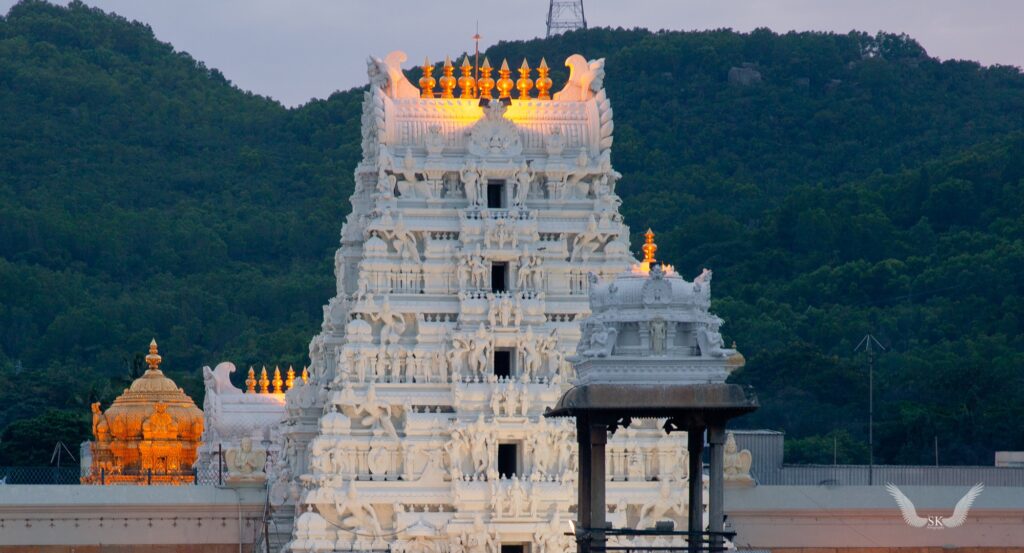
Formation:
Seeds of Identity: The desire for a Telugu-speaking state emerged in the early 20th century. The Andhra Maha Sabha, a political organization, spearheaded the movement, highlighting the cultural and linguistic distinctness of Telugu-speaking people.
Birth of a State: Decades of activism culminated in the formation of Andhra State on October 1st, 1953, with Kurnool as its capital. This marked a significant milestone in the recognition of Telugu identity.
The Hyderabad Chapter: The state of Hyderabad, a multilingual region ruled by the Nizam, also included Telugu-speaking areas. The Gentlemen’s Agreement of 1956 paved the way for the merger of these Telugu areas with Andhra State, forming Andhra Pradesh with Hyderabad as its capital on November 1st, 1956.
Language:
Telugu Reigns Supreme: Telugu, a Dravidian language with a rich literary heritage, is the official language of Andhra Pradesh. It is spoken by a vast majority of the population and serves as a unifying force across diverse ethnicities.
Beyond Telugu: While Telugu dominates, pockets of the state have significant populations speaking Urdu, Hindi, and tribal languages like Gondi and Savara. This linguistic diversity adds to the cultural richness of Andhra Pradesh.
Ethnicity:
The Telugu Mosaic: The Telugu people, with their unique customs and traditions, form the largest ethnic group. However, Andhra Pradesh embraces a rich tapestry of other communities.
Tribal Communities: The state boasts numerous tribal communities like the Koyas, Todas, and Gavaras, who have inhabited the hills and forests for centuries. They possess distinct languages, customs, and social structures.
Religious Harmony: Hinduism is the predominant religion, but Andhra Pradesh is known for its religious tolerance. Muslims, Christians, and other faiths co-exist peacefully, adding to the social fabric.
Capital City:
Kurnool’s Brief Reign: Kurnool served as the capital of Andhra State for a short period after its formation in 1953.
Hyderabad’s Legacy: With the merger of Hyderabad state in 1956, the capital shifted to Hyderabad. It remained the capital for several decades, leveraging its historical significance and cosmopolitan character.
A Bifurcated Capital: In 2014, following a long-standing movement for a separate Telangana state, Andhra Pradesh underwent a significant change. Hyderabad became the joint capital of both Andhra Pradesh and Telangana for a period of ten years. This window was intended to allow Andhra Pradesh time to develop a new capital city.
The Rise of Amaravati: In 2017, Amaravati, a newly planned city on the banks of the Krishna River, was declared the capital of Andhra Pradesh. The state government envisions Amaravati as a symbol of growth and a center for sustainable development.
2. Arunachal Pradesh: The Land of the Dawn-Lit Mountains
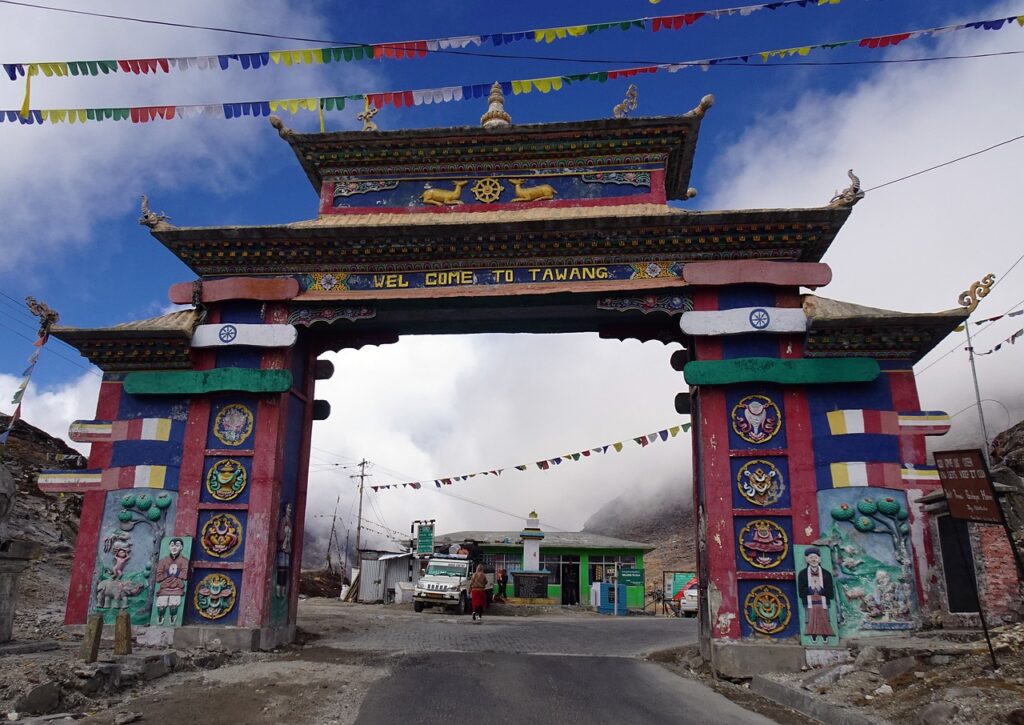
Formation:
From Frontier Agency to Statehood: Arunachal Pradesh’s history is intertwined with its strategic location bordering China, Bhutan, and Myanmar. Initially, it was administered by the British as part of the North-East Frontier Agency (NEFA).
A Long Road to Recognition: After India’s independence, NEFA remained a centrally administered territory. However, the demand for greater autonomy and recognition of its unique identity grew.
Arunachal Pradesh is Born: In 1972, NEFA was renamed Arunachal Pradesh, signifying its distinct cultural and geographical identity. Finally, in 1987, it achieved full statehood, marking a significant milestone.
Languages:
A Tower of Tongues: Arunachal Pradesh boasts a staggering linguistic diversity. There are over 50 distinct languages and dialects spoken, primarily belonging to the Tibeto-Burman branch of the Sino-Tibetan language family.
Challenges of Communication: This linguistic variety presents a challenge for communication within the state. Hindi and English serve as lingua francas to bridge the gap between different communities.
Efforts for Preservation: Recognizing the importance of preserving these unique languages, the state government has undertaken initiatives to document and promote them.
Ethnicity:
A Tapestry of Tribes: Arunachal Pradesh is home to over 26 major tribes, each with its own distinct language, customs, and traditions. Some prominent tribes include the Adi, Apatani, Mishmi, and Nyishi.
Celebrating Diversity: Tribal festivals like the Dree Festival (Adi) and the Solung Festival (Adi) showcase the vibrant cultural heritage of these communities. The state government actively promotes inter-tribal understanding and celebrates this rich tapestry.
Capital City:
Itanagar: The Seat of Power: Itanagar, nestled in the Papum Pare district, is the capital city of Arunachal Pradesh. Established in 1948, it has grown into a bustling administrative center.
Development and Challenges: The state government is focused on developing Itanagar’s infrastructure and facilities to make it a more modern and efficient capital city. However, challenges like hilly terrain and remoteness require innovative solutions.
3. Assam: A Land of Many Threads Woven Together
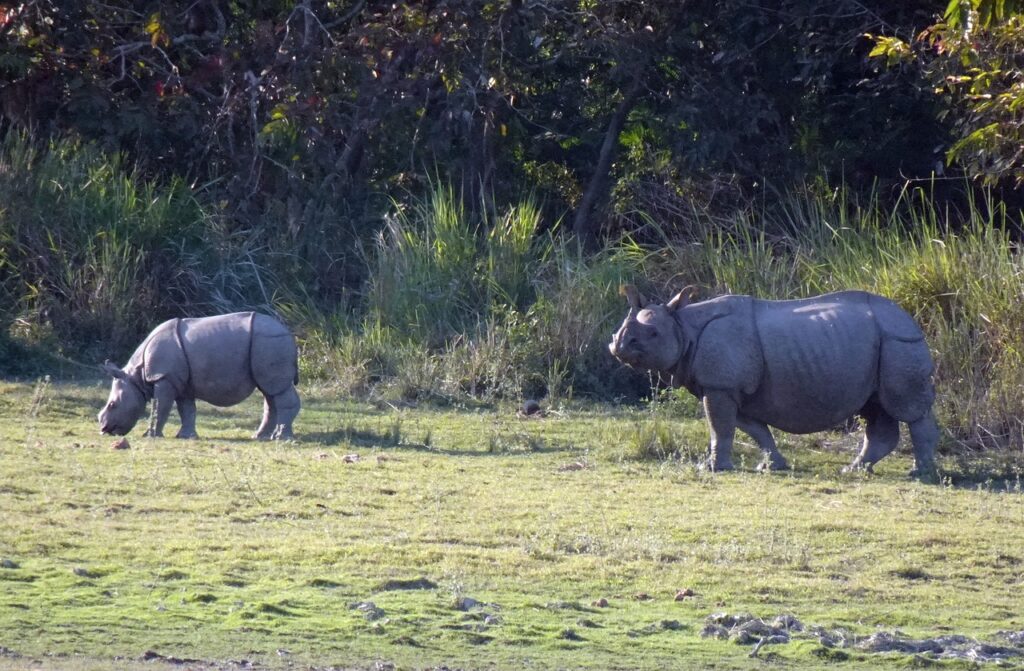
Formation:
Early Kingdoms: Assam’s story begins with the Ahom kingdom, established in the 13th century by the Tai people from Southeast Asia. They ruled Upper Assam for nearly 600 years, shaping the region’s identity.
Colonial Era: The British annexed Assam in stages, starting with Cachar in 1832 and culminating in the formation of the Chief Commissioner’s Province of Assam in 1874. Shillong became the capital.
Post-Independence: Assam faced significant reorganisation after India’s independence in 1947. The Sylhet district, predominantly Bengali-speaking, was included in East Pakistan (present-day Bangladesh). The influx of refugees from East Pakistan and the rise of Assamese nationalism led to a complex political landscape.
Languages:
Assamese: The official language, Assamese, belongs to the Indo-Aryan language family and is spoken by a majority of the population. It faced a period of marginalization during British rule when Bengali held official status. The Assamese Language Movement of 1959 successfully reinstated Assamese as an official language.
Bodo: Assam is a multilingual state. Bodo, a Tibeto-Burman language, is spoken by a significant population and enjoys official language status in specific areas.
Bengali: Bengali holds an important place, particularly in the Barak Valley region. It enjoys official language status in the Cachar district alongside Assamese.
Other Languages: Numerous indigenous languages like Dimasa, Mishing, and Deuri add to Assam’s rich linguistic tapestry.
Ethnicities:
Assamese: The Assamese people form the largest ethnic group, with a diverse cultural heritage influenced by the Ahoms, Bodos, and other communities.
Bodos: Assam is home to a sizeable Bodo population, concentrated in the Bodoland Territorial Region. They have a distinct culture and language.
Bengalis: The Bengali community has a long history in Assam, particularly in the Barak Valley. They contribute significantly to the state’s social and cultural fabric.
Indigenous Communities: Numerous indigenous communities like the Dimasas, Mishings, and Deuris have inhabited Assam for centuries. They possess unique traditions and customs.
Capital City:
Shillong: Initially, Shillong served as the capital during British rule due to its cooler climate. However, after independence, there were discussions about a more centrally located capital.
Dispur: In 1972, Dispur, a planned township near Guwahati, became the capital of Assam. Guwahati remains the largest city and the commercial center of the state.
4. Bihar: Echoes of Ancient Empires in a Modern State
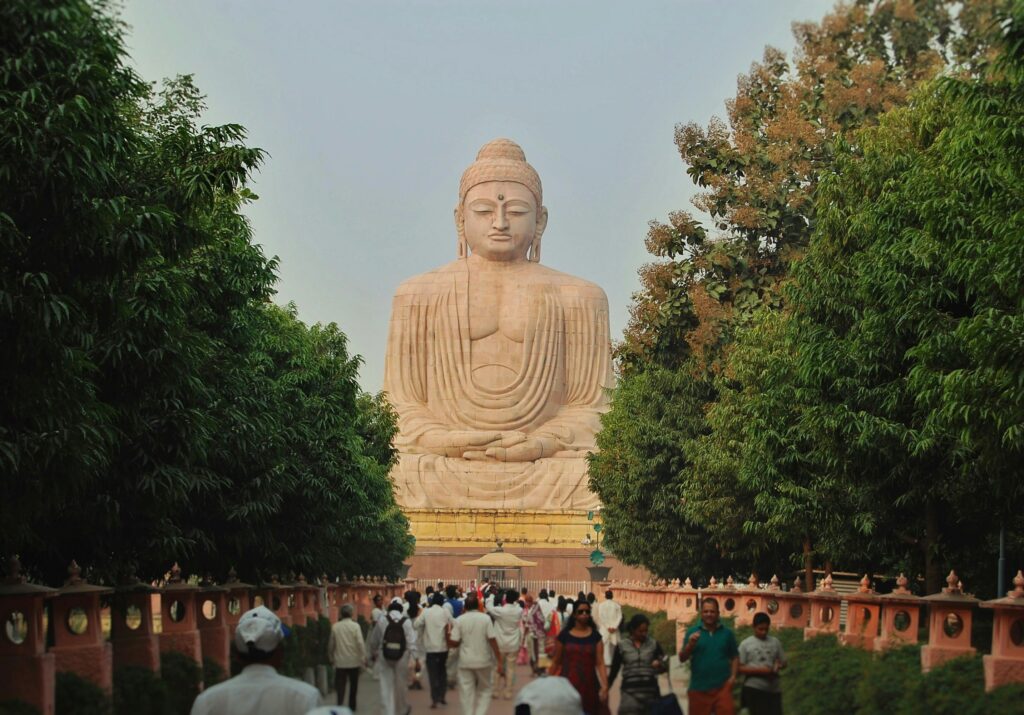
Formation:
Echoes of Empires: Bihar’s history stretches back millennia. It was a prominent part of the powerful Mauryan Empire (3rd century BCE) and later the Magadha kingdom, renowned for its contributions to philosophy and religion.
Colonial Legacy: After centuries of shifting rulers, Bihar came under British rule in the 18th century. It became a part of the Bengal Presidency and later a separate province.
A State is Born: Following India’s independence in 1947, Bihar remained a large state. However, in 2000, Jharkhand, a region with a distinct tribal identity, was carved out of Bihar, recognizing its aspirations for a separate state.
Languages:
Hindi Reigns Supreme: Hindi, the national language of India, is the most widely spoken language in Bihar. It serves as the primary language for administration and education.
The Maithili Mosaic: Maithili, an Indo-Aryan language with a rich literary heritage, is spoken by a significant population, particularly in the Mithila region. It enjoys official language status in Bihar alongside Hindi.
A Symphony of Languages: Bhojpuri, Magahi, and Angika are other significant languages spoken in different regions, adding to the state’s linguistic diversity.
Ethnicity:
Predominantly Indo-Aryan: The majority of Bihar’s population belongs to various Indo-Aryan ethnic groups. These groups share some cultural similarities but also possess distinct customs and traditions.
Tribal Communities: Adivasi communities, such as the Santhals and Mundas, have inhabited the state for centuries. They have a rich cultural heritage and distinct ways of life.
Religious Harmony: Hinduism is the dominant religion in Bihar, but the state boasts a tradition of religious tolerance. Muslims, Christians, Jains, and Sikhs also form parts of the social fabric.
Capital City:
Patna: A City Steeped in History: Patna, situated on the banks of the Ganges River, is the capital of Bihar. It boasts a rich history dating back to the Mauryan Empire and was known as Pataliputra, a center of power and learning.
A Modernizing Metropolis: Today, Patna is a bustling city undergoing rapid development. The state government is focused on improving infrastructure, education, and healthcare facilities to make Patna a vibrant capital city.
5. Chhattisgarh: A Land Reclaimed – History, Language, Ethnicity, and Capital
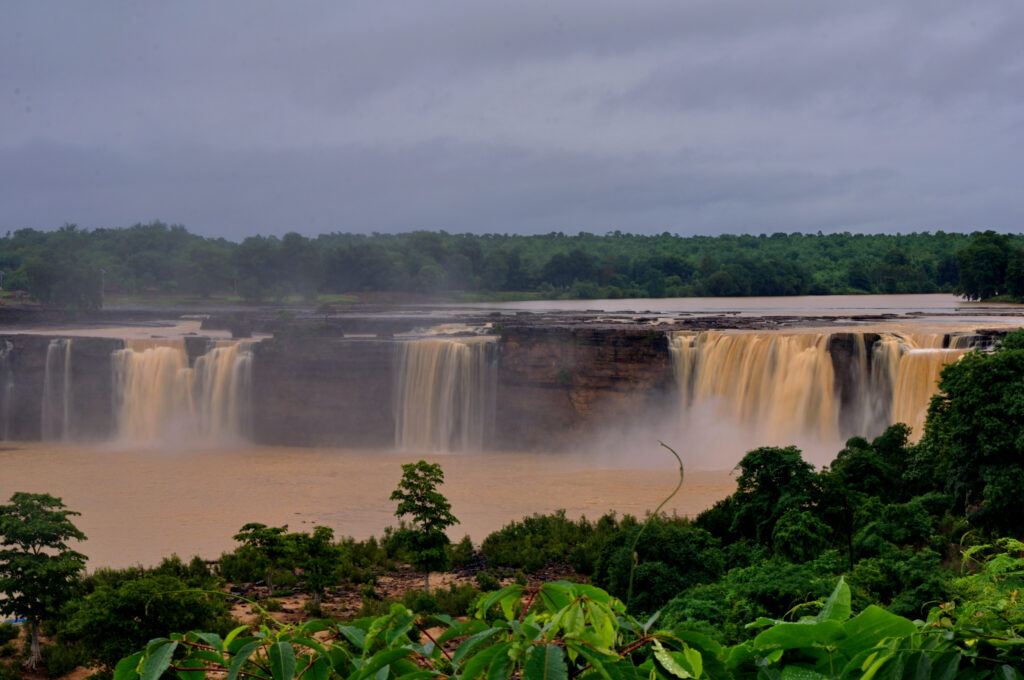
Formation:
Echoes of Ancient Kingdoms: Chhattisgarh’s history stretches back centuries. The region was once part of the mighty Haihaya dynasty, who ruled from Ratanpur for over 700 years. Later, it came under the Maratha Empire and finally under British rule as part of the Central Provinces and Berar.
Seeds of Independence: The 20th century witnessed the rise of a movement for a separate Chhattisgarh state. Local leaders championed the region’s distinct cultural identity and language, different from that of Madhya Pradesh.
A State is Born: Decades of activism culminated in the formation of Chhattisgarh on November 1st, 2000. This marked a significant milestone for the region, recognizing its unique identity and aspirations.
Languages:
Chhattisgarhi Takes Center Stage: Chhattisgarhi, an Indo-Aryan language with Dravidian influences, is the official language of the state. It is spoken by a vast majority of the population and serves as a unifying force across diverse ethnicities.
Hindi: A Bridge for Communication: While Chhattisgarhi dominates, Hindi plays a crucial role in administration, education, and communication with other Indian states.
Tribal Languages Endure: Chhattisgarh is home to numerous tribal communities, each with its own distinct language. Gondi, spoken by the Gond tribe, is one such example. The state government is taking steps to document and preserve these languages.
Ethnicity:
A Mosaic of Communities: Chhattisgarh boasts a rich tapestry of ethnicities. The Satnami community, known for its social reform movements, forms a significant part of the population. Other groups include Halba, Muria, and Kawar, each with distinct customs and traditions.
Tribal Legacy: Tribals constitute a significant portion of Chhattisgarh’s population, with the Gond tribe being the largest. They have a rich cultural heritage, evident in their art, music, and dance forms. The state actively promotes tribal art and crafts, fostering cultural awareness.
Capital City:
Raipur: The Hub of Growth: Raipur, a city with a growing commercial sector, is the capital of Chhattisgarh. It played a crucial role during the struggle for statehood and has emerged as a major administrative and educational center.
Development and Vision: The state government is focused on developing Raipur’s infrastructure, attracting investments, and improving its educational and healthcare facilities. The aim is to transform Raipur into a vibrant capital city at the heart of a thriving Chhattisgarh.
6. Goa: A Fusion of Cultures – From Portuguese Colony to Vibrant Indian State
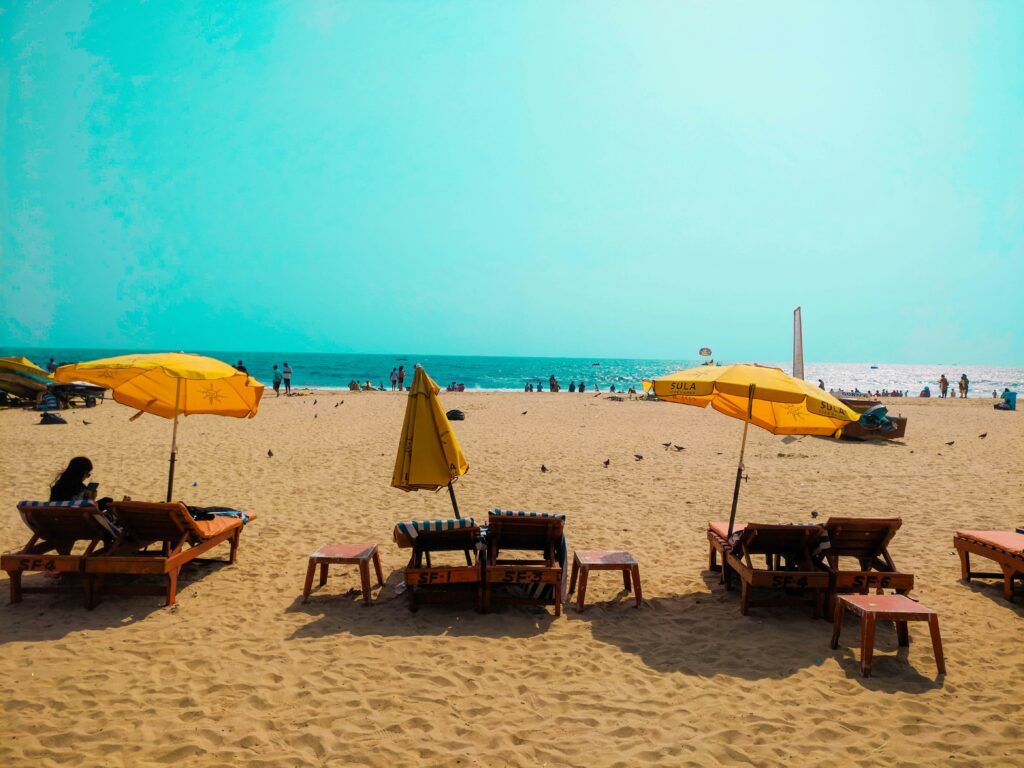
Formation:
A Portuguese Enclave: Unlike most of India, Goa’s history is intertwined with European colonialism. From the 16th to the 20th centuries, Goa was a Portuguese colony, known for its strategic location and thriving spice trade. This period left an indelible mark on Goan architecture, cuisine, and religious landscape.
The Freedom Struggle: The 20th century witnessed a growing movement for Goa’s liberation from Portuguese rule. The peaceful Satyagraha movement, coupled with international pressure, culminated in Goa’s annexation by India in 1961.
Statehood Achieved: Initially a union territory, Goa, Daman, and Diu achieved statehood in 1987. This marked a significant milestone for the region, allowing it to forge its own path within the Indian Union.
Languages:
Konkani Reigns Supreme: Konkani, an Indo-Aryan language with distinct dialects, is the official language of Goa. It showcases the region’s unique cultural identity, with influences from Marathi, Portuguese, and Kannada.
Marathi Holds Significance: Marathi, another Indo-Aryan language, is spoken by a sizeable population, particularly in the Ghats region. It holds historical significance due to its association with the Maratha Empire, which briefly ruled Goa in the 17th century.
English: A Bridge for Communication: English plays a vital role in tourism, administration, and higher education. While not widely spoken, it serves as a bridge for communication with diverse communities within Goa and beyond.
Ethnicity:
A Blend of Heritage: Goa’s population reflects a beautiful blend of ethnicities. The Goud Saraswat Brahmins, with their distinct customs and Konkani dialect, form a significant part of the community. Other communities include the Kunbis, Velips, and Christian communities who add to the cultural richness.
Portuguese Legacy: The Portuguese presence for centuries left behind a distinct ethnic influence. The Luso-Indians, a community of mixed Portuguese and Indian descent, contribute to Goa’s cultural fabric.
Capital City:
Panaji: A Bustling Hub: Panaji, situated on the banks of the Mandovi River, is the capital city of Goa. It boasts a charming Portuguese colonial architecture and a vibrant cultural scene.
From Administrative Center to Tourist Magnet: Initially a small fishing village, Panaji transformed into the administrative center after Goa’s liberation. Today, it thrives as a major tourist destination, balancing its historical charm with modern development.
7. Gujarat: A Land of Merchants, Mariners, and Vibrant Culture
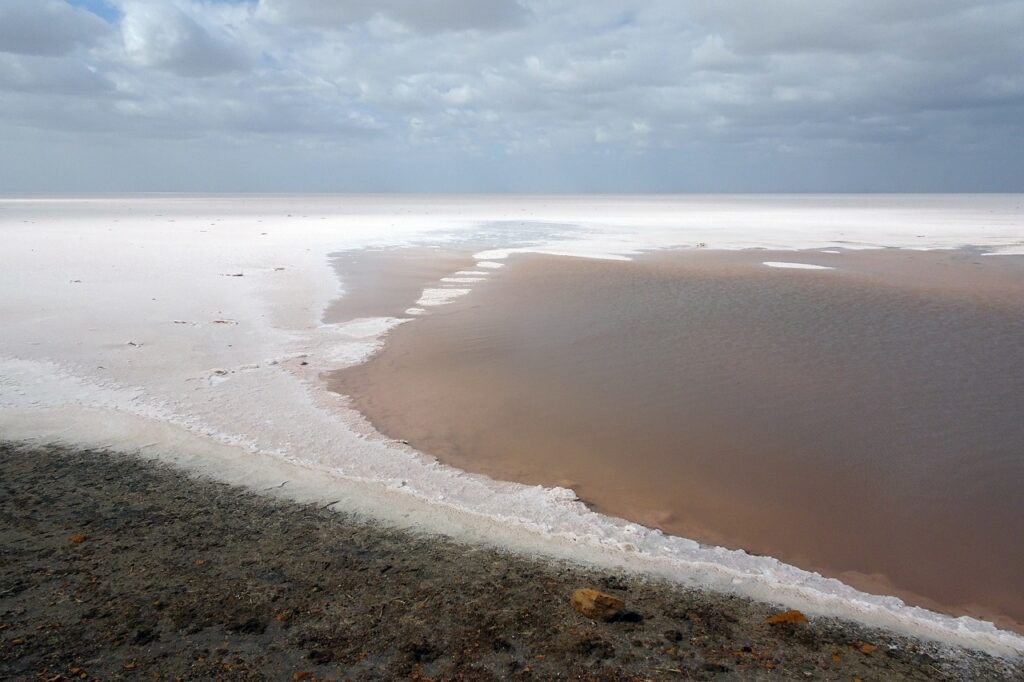
Formation:
Echoes of Ancient Empires: Gujarat’s history stretches back millennia. It was part of the Indus Valley Civilization and later home to powerful empires like the Mauryas and Guptas. The region flourished as a maritime hub, connecting India with the Middle East and beyond.
From Princely States to Bombay Presidency: After centuries of shifting rulers, Gujarat came under British rule in the 19th century. It became part of the Bombay Presidency, a vast administrative unit.
The Fight for a Gujarati State: The 20th century witnessed a growing demand for a separate Gujarati state. The struggle for recognition of Gujarati language and culture intensified. The Bombay Reorganisation Act of 1960 finally carved out Gujarat from the larger Bombay Presidency. This marked a significant milestone for the Gujarati people.
Languages:
Gujarati: The Language of Unity: Gujarati, an Indo-Aryan language with a rich literary heritage, is the official language of the state. It serves as a unifying force across diverse ethnicities and is spoken by a vast majority of the population.
A Symphony of Languages: While Gujarati dominates, other languages like Hindi, Sindhi, and Kutchi add to the state’s linguistic diversity. These languages reflect Gujarat’s historical connections with other regions and communities.
Ethnicity:
A Tapestry of Communities: Gujarat is home to a diverse range of ethnic groups. The Patels, known for their entrepreneurial spirit and agricultural prowess, form a significant part of the population. Other communities include the Jains, a religious minority with a rich cultural heritage, and the Adivasi (tribal) communities residing in the hilly regions.
Harmony in Diversity: Despite the diversity, Gujarat fosters a sense of unity and celebrates its various communities. Vibrant festivals like Navratri and Diwali showcase the rich cultural tapestry of the state.
Capital City:
Gandhinagar: A Planned Metropolis: Gandhinagar, a planned city built in the 1970s, is the capital of Gujarat. It offers a blend of modern infrastructure and historical landmarks dedicated to Mahatma Gandhi.
Shifting the Capital: Prior to Gandhinagar, Ahmedabad served as the capital after Gujarat’s formation. However, a decision was made to develop a planned city to better accommodate the administrative needs of the growing state.
8. Haryana: A Land Carved from History – Language, Ethnicity, Capital, and Formation
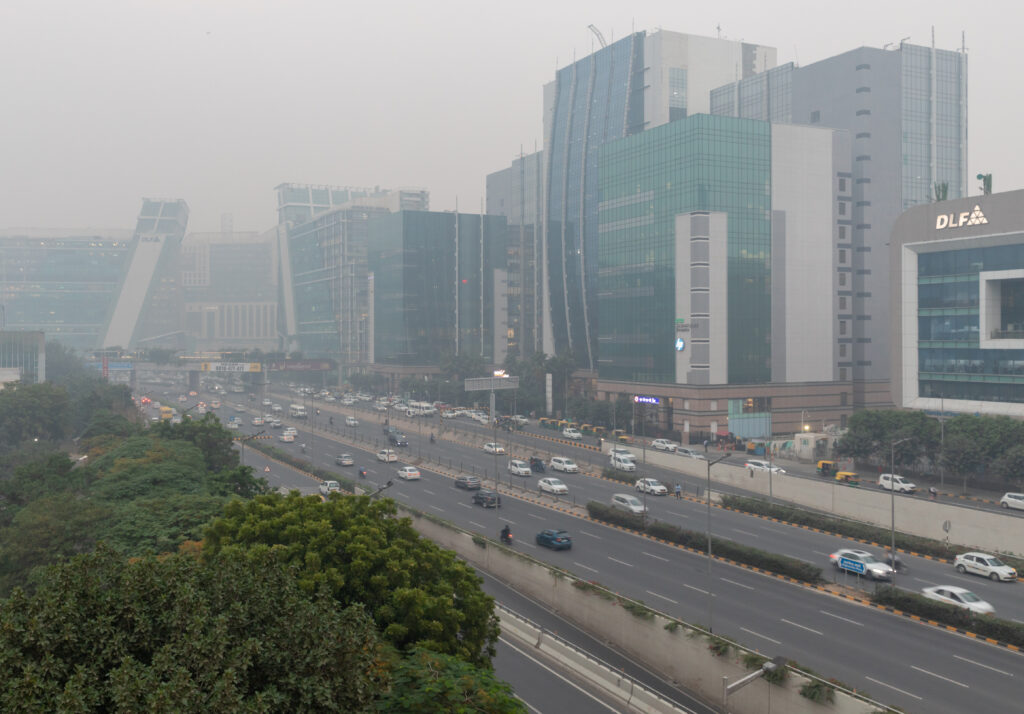
Formation:
Echoes of Ancient Empires: Haryana’s history stretches back centuries. It formed part of the mighty Indus Valley Civilization and later powerful empires like the Mauryas and the Delhi Sultanate. The region served as a crucial land route for trade and cultural exchange.
Under the British Raj: After centuries of shifting rulers, Haryana came under British rule in the 19th century. It became part of the larger Punjab Province, which encompassed a diverse linguistic and cultural landscape.
Seeds of Separation: The 20th century witnessed a growing demand for a separate Haryana state. The Punjabi Suba movement, advocating for a Punjabi-speaking state, gained momentum. However, a significant portion of Haryana’s population spoke Hindi and felt their cultural identity was not being recognized.
A State is Born: The Punjab Reorganisation Act of 1966 addressed these concerns. It partitioned Punjab based on linguistic lines, carving out Haryana as a separate Hindi-speaking state. This marked a significant milestone for the region.
Languages:
Hindi Takes Center Stage: Hindi, the national language of India, is the official language of Haryana. It serves as the primary language for administration, education, and communication across diverse communities.
Punjabi Echoes: While Hindi dominates, Punjabi still holds significance for a portion of the population, particularly in border regions. This reflects Haryana’s historical ties to Punjab.
Ethnicity:
A Predominantly Indo-Aryan Mosaic: Haryana is home to a diverse range of Indo-Aryan ethnic groups. The Jats, known for their agricultural prowess and martial traditions, form a significant part of the population. Other communities include the Brahmins, Ahirs, and Banias, each with distinct customs and social structures.
Religious Harmony: Hinduism is the dominant religion in Haryana, with a significant Sikh population residing in some areas. The state promotes religious tolerance, fostering a peaceful coexistence of various faiths.
Capital City:
Chandigarh: A Shared Capital: Chandigarh, a meticulously planned city designed by the renowned architect Le Corbusier, serves as the capital city of both Haryana and Punjab. This unique arrangement reflects the historical and cultural ties between the two states.
A City for Two: Chandigarh is divided into sectors, each with distinct functions. The administrative buildings serve both Haryana and Punjab, showcasing a spirit of cooperation.
9. Himachal Pradesh: The Abode of Snow – A Tapestry of Languages, Ethnicities, and History
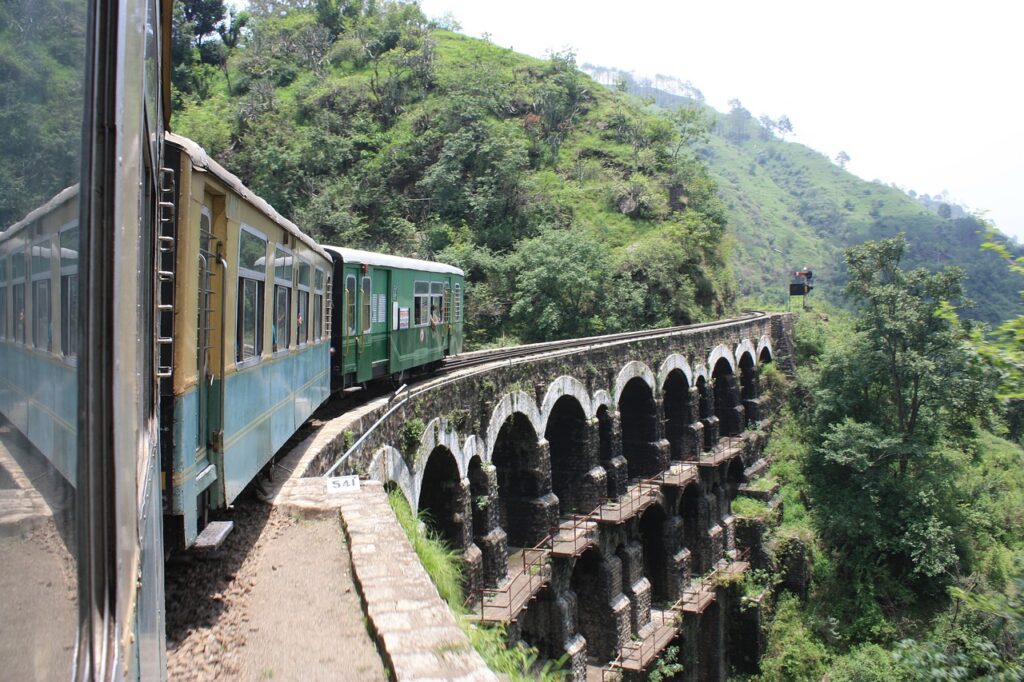
Formation:
From Princely States to Union Territory: Himachal Pradesh’s history is intertwined with numerous princely states that dotted the region for centuries. After India’s independence in 1947, many of these states were integrated to form the Chief Commissioner’s province of Himachal Pradesh.
A Gradual Transformation: Himachal Pradesh became a Part ‘C’ state in 1950 and a union territory in 1956. This period saw the consolidation of various territories and the gradual establishment of a unified administration.
Statehood Achieved: Recognizing the region’s distinct cultural identity and the aspirations of its people, Himachal Pradesh was finally granted full statehood in 1971. This marked a significant milestone for the region, allowing it to chart its own course of development.
Languages:
Hindi: The Lingua Franca: Hindi, the national language of India, serves as the official language of Himachal Pradesh. It acts as a bridge for communication between diverse communities and is used in administration and education.
A Symphony of Hill Dialects: The true linguistic richness of Himachal Pradesh lies in the multitude of regional languages and dialects. These include Pahari languages like Kangri, Himachali, and Kulluvi, each with distinct vocabulary and pronunciations. These languages showcase the unique cultural heritage of different regions within the state.
Ethnicity:
A Mosaic of Hill Communities: Himachal Pradesh boasts a vibrant mosaic of ethnicities, each with their own customs and traditions. The Rajput communities, known for their martial spirit, form a significant part of the population. Other groups include the Gaddis, Kinnauris, and Lahaulis, who have adapted their way of life to the challenging Himalayan terrain.
Tribal Legacy: Tribal communities like the Gujjars and Van Gujjars have inhabited the forests and foothills for centuries. They possess a rich cultural heritage and a deep connection to nature. The state government actively works to preserve their unique traditions and ensure their social inclusion.
Capital City:
Shimla: A Colonial Legacy and Modern Hub: Shimla, nestled amidst rolling hills, is the capital city of Himachal Pradesh. Originally a summer retreat for the British Raj, it transformed into a major administrative center after independence.
A City of Two Seasons: Shimla offers a charming blend of colonial architecture and modern infrastructure. During the summer months, it serves as the bustling administrative hub. In winter, the government temporarily relocates to Dharamshala, a lower-altitude town, highlighting the state’s commitment to regional representation.
10. Jharkhand: A Long-Awaited Recognition – History, Language, Ethnicity, and Capital

Formation:
Echoes of Ancient Kingdoms: Jharkhand’s history stretches back centuries. It was part of powerful empires like the Mauryas and Gupta Empire. However, for much of its history, the region was ruled by local tribal chiefs who fiercely protected their autonomy.
Colonial Exploitation and Adivasi Resistance: The arrival of the British Raj in the 18th century marked a period of exploitation and displacement for the Adivasi communities. Their lands were taken for resource extraction, leading to numerous rebellions against colonial rule.
Seeds of Separation: The 20th century witnessed a growing movement for a separate Jharkhand state. Leaders like Jaipal Singh Munda championed the cause, highlighting the cultural and linguistic distinctness of the Adivasi population and the need for self-determination.
A State is Born: Decades of activism culminated in the formation of Jharkhand on November 15th, 2000, carving it out of the southern part of Bihar. This marked a significant milestone for the Adivasi communities, granting them a platform to preserve their cultural heritage and address their developmental needs.
Languages:
A Symphony of Tribal Tongues: Jharkhand boasts a rich linguistic tapestry. Several Austroasiatic languages, like Mundari and Santhali, dominate in tribal communities. These languages reflect the unique cultural identity of the Adivasi population.
Hindi: A Bridge for Communication: While tribal languages hold significance, Hindi, the national language of India, serves as the official language of Jharkhand. It acts as a bridge for communication between diverse communities and is used in administration and education.
Ethnicity:
A Predominantly Adivasi Mosaic: Jharkhand is home to a diverse range of Adivasi communities, each with distinct customs and traditions. The Santhals, Mundas, and Oraons form the largest groups, collectively known as the “sons of the soil.” They have a deep connection to nature and a rich oral tradition.
Non-Adivasi Communities: While Adivasi communities form the majority, Jharkhand also has significant populations of non-Adivasi groups like Bihari, Bengali, and Marwari communities. These groups contribute to the state’s social and cultural fabric.
Capital City:
Ranchi: The Heart of Jharkhand: Ranchi, a bustling city nestled amidst hills, is the capital of Jharkhand. It played a pivotal role in the Jharkhand movement and has emerged as a major administrative, educational, and commercial center.
A City on the Move: Ranchi is undergoing rapid development, with initiatives aimed at improving infrastructure, education, and healthcare facilities. The city also takes pride in preserving its tribal heritage through cultural events and museums.
11. Karnataka: A Legacy Etched in Stone – History, Language, Ethnicity, and Capital City
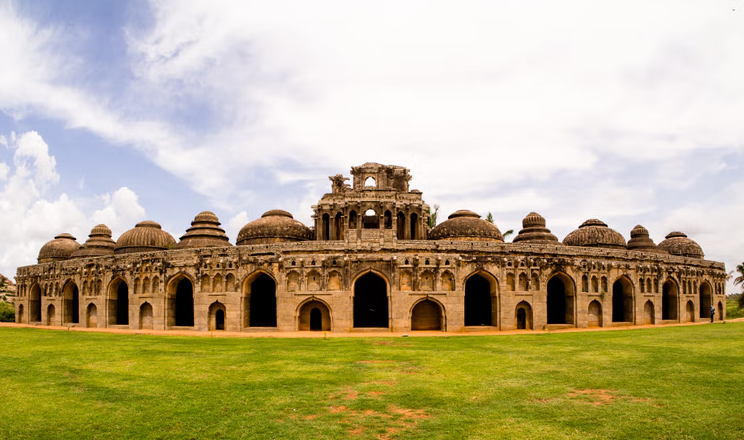
Formation:
Echoes of Ancient Empires: Karnataka boasts a rich history dating back to ancient empires. The Mauryas, Kadambas, Chalukyas, and Vijayanagara Empire all left their mark on the region, fostering a vibrant culture and architectural marvels like Hampi.
From Princely States to Mysore: After centuries of shifting rulers, the British Raj established the princely state of Mysore in the 19th century. Though encompassing a diverse region, Kannada remained the unifying language.
The Ekikarana Movement: The 20th century witnessed the rise of the Ekikarana movement, advocating for the unification of Kannada-speaking regions under a single state. This movement gained momentum after India’s independence, demanding recognition of the distinct Kannada identity.
Birth of a State: The States Reorganisation Act of 1956 marked a pivotal moment. Parts of Madras, Hyderabad, and Bombay states with significant Kannada populations were merged with Mysore state. In 1973, to reflect the broader Kannada identity, Mysore was renamed Karnataka.
Language:
Kannada Reigns Supreme: Kannada, a Dravidian language with a rich literary heritage, is the official language of Karnataka. It serves as a unifying force across diverse ethnicities and is spoken by a vast majority of the population.
A Symphony of Languages: While Kannada dominates, the state boasts a beautiful linguistic landscape. Tulu, spoken along the coast, Kodava in the Kodagu region, and several tribal languages add to the cultural richness.
Ethnicity:
A Tapestry of Communities: Karnataka is home to a diverse range of ethnic groups. The Kannadigas, the largest community, are known for their rich cultural traditions and entrepreneurial spirit. Other groups include the Kodavas, known for their martial heritage, and the Tuluvas, with their distinct customs and cuisine.
Religious Harmony: Hinduism is the dominant religion in Karnataka, but the state is known for its religious tolerance. Muslims, Christians, Jains, and Sikhs also form part of the social fabric.
Capital City:
Bengaluru: From Garden City to Tech Hub: Bengaluru, formerly Bangalore, is the capital and largest city of Karnataka. It has transformed from a garden city known for its pleasant climate to a global hub for information technology and innovation.
A City on the Rise: Bengaluru is undergoing rapid development, with a focus on improving infrastructure, attracting global corporations, and fostering a vibrant startup ecosystem. Despite modernization, the city strives to preserve its historical landmarks and green spaces.
12. Kerala: Where Backwaters Meet History – A Tapestry of Languages, Ethnicities, and a Capital City

Formation:
Echoes of Ancient Kingdoms: Kerala boasts a history dating back millennia. Powerful empires like the Cheras, Ays, and Mushika flourished here, leaving behind a legacy of trade and cultural exchange. Kerala was a prominent spice exporter, attracting traders from across the globe.
Medieval Maritime Hub: During the medieval period, Kerala became a major maritime hub, attracting Arab and European traders. This period saw the rise of powerful kingdoms like Kochi and Kollam, fostering religious tolerance and cultural exchange.
Colonial Rule and Princely States: The arrival of the British in the 18th century led to the annexation of Malabar. However, Travancore and Cochin remained independent princely states until India’s independence.
A State is Born: The States Reorganisation Act of 1956 marked a significant milestone. It merged the Malabar district, the princely state of Travancore-Cochin, and the Kasaragod taluk to form the state of Kerala, recognizing the unifying force of the Malayalam language and shared cultural heritage.
Languages:
Malayalam: The Unifying Thread: Malayalam, a Dravidian language with a rich literary heritage, is the official language of Kerala. It serves as a unifying force across diverse ethnicities and is spoken by a vast majority of the population.
Whispers of Other Tongues: While Malayalam dominates, pockets of the state boast other languages. Tamil is spoken in some southern districts, reflecting historical connections. Konkani and Kannada also have a presence, showcasing the state’s multicultural heritage.
Ethnicity:
A Mosaic of Communities: Kerala is a land of diverse ethnicities, each with distinct customs and traditions. The Nairs, known for their martial history and matrilineal social system, form a significant part of the population. Other communities include the Ezhavas, Syrian Christians, and tribals like the Paniyar and Kadar, each enriching the social fabric.
Religious Harmony: Kerala has a long tradition of religious tolerance. Hinduism is the dominant religion, but Muslims, Christians, and Jains also have a strong presence. This religious diversity fosters a sense of peaceful coexistence.
Capital City:
Thiruvananthapuram: City of Eternal Bliss: Thiruvananthapuram, also known as Trivandrum, is the capital city of Kerala. Renowned for its Padmanabhaswamy Temple and rich artistic heritage, it was the historical capital of Travancore.
A Hub of Culture and Administration: Thiruvananthapuram is a major administrative center and a hub for education, healthcare, and IT industries. The city actively promotes its rich cultural heritage through traditional art forms like Kathakali dance and Ayurvedic medicine.
13. Madhya Pradesh: A Fusion of Heritage – History, Language, Ethnicity, and Capital City
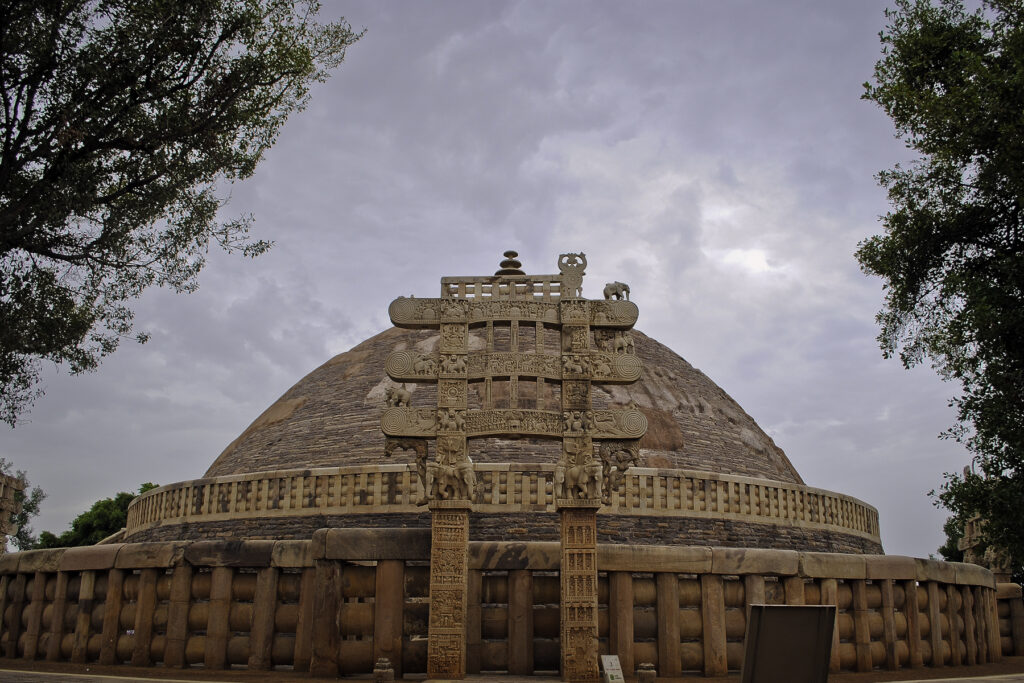
Formation:
Echoes of Empires: Madhya Pradesh’s history stretches back centuries. It formed part of the mighty Mauryan Empire, Gupta Empire, and later powerful kingdoms like the Malwa Sultanate and Maratha Empire. This rich past left behind a legacy of architectural marvels like Sanchi Stupa and Khajuraho Temples.
Colonial Legacy: After centuries of shifting rulers, much of the region came under British rule in the 18th century. It became part of the Central Provinces and Berar, a vast administrative unit.
A State is Born: Following India’s independence in 1947, the Central Provinces and Berar was renamed Madhya Pradesh with Nagpur as its capital. This state included the southern parts of the present-day Madhya Pradesh and northeastern portion of today’s Maharashtra.
Reorganization for Identity: In 1956, Madhya Pradesh underwent a significant transformation. The States Reorganisation Act carved out separate states for Marathi-speaking regions, including Nagpur. However, this act also merged several princely states like Bhopal, Vindhya Pradesh, and Makrai with the remaining Madhya Pradesh, creating a more geographically cohesive state with a stronger Hindi identity.
Languages:
Hindi: The Lingua Franca: Hindi, the national language of India, is the official language of Madhya Pradesh. It serves as the primary language for administration, education, and communication across diverse communities.
A Symphony of Languages: Despite Hindi’s dominance, Madhya Pradesh boasts a rich linguistic landscape. Malvi, a dialect of Hindi with distinct vocabulary and pronunciation, is spoken by a significant population in the Malwa region. Other languages like Bundeli, Bagheli, and Marathi add to the state’s cultural tapestry.
Ethnicity:
A Predominantly Indo-Aryan Mosaic: Madhya Pradesh is home to a diverse range of Indo-Aryan ethnic groups. The Malwis, known for their agricultural prowess and vibrant folk traditions, form a significant part of the population. Other groups include the Bundelas, known for their martial history, and the Adivasi (tribal) communities residing in the hilly regions.
Religious Harmony: Hinduism is the dominant religion in Madhya Pradesh, with a significant Muslim and Jain population. The state promotes religious tolerance, fostering a peaceful coexistence of various faiths.
Capital City:
Bhopal: City of Lakes and Legacy: Bhopal, nestled amidst picturesque lakes, is the capital city of Madhya Pradesh. It was historically the capital of the Bhopal princely state and boasts a rich architectural heritage. After becoming the capital, Bhopal transformed into a major administrative and educational center.
A Green Oasis: Bhopal is known as the “City of Lakes” due to the numerous natural and artificial lakes within its boundaries. The city actively promotes environmental initiatives and is a haven for wildlife, earning it the nickname “Tiger Capital” due to the presence of nearby national parks.
14. Maharashtra: A Land United by Language – History, Language, Ethnicity, and Capital City

Formation:
Echoes of Ancient Empires: Maharashtra’s history stretches back centuries. It formed part of powerful empires like the Satavahanas and Chalukyas, leaving behind architectural marvels like the Ajanta and Ellora Caves. The region flourished as a center of trade and cultural exchange.
Maratha Supremacy: The 17th century witnessed the rise of the Maratha Empire, which established Marathi as the administrative language and consolidated much of the region under its rule. This period laid the foundation for a strong Marathi identity.
Colonial Era and Divided Legacy: Following the Maratha Empire’s decline in the 18th century, the British Raj incorporated much of the region into the Bombay Presidency. However, this vast administrative unit also included Gujarati-speaking areas, leading to a sense of cultural and linguistic disparity for Marathi speakers.
The Samyukta Maharashtra Movement: The 20th century saw a growing demand for a separate Marathi state. The Samyukta Maharashtra Movement (United Maharashtra Movement) gained momentum, advocating for the unification of Marathi-speaking regions under a single state. This period witnessed peaceful protests and political activism.
Birth of a State: In 1960, the States Reorganisation Act carved out the state of Maharashtra from the Bombay Presidency. This act recognized the distinct Marathi identity and addressed the grievances of the Samyukta Maharashtra Movement.
Language:
Marathi: The Unifying Thread: Marathi, an Indo-Aryan language with a rich literary heritage, is the official language of Maharashtra. It serves as a unifying force across diverse ethnicities and is spoken by a vast majority of the population.
A Touch of Diversity: While Marathi dominates, pockets of the state showcase other languages. Konkani, spoken along the coast, and Urdu, with its historical influence, add to the linguistic tapestry. Tribal communities also have their distinct languages, reflecting the state’s cultural richness.
Ethnicity:
A Mosaic of Communities: Maharashtra is a land of diverse ethnicities, each with distinct customs and traditions. The Marathas, known for their warrior spirit and legacy of the Maratha Empire, form a significant part of the population. Other groups include the Kunbis, known for their agricultural practices, and the Warlis and Kolis, tribal communities with rich cultural traditions.
Religious Harmony: Maharashtra promotes religious tolerance. Hinduism is the dominant religion, but Muslims, Christians, Buddhists, and Jains also have a strong presence. This religious diversity fosters a peaceful coexistence.
Capital City:
Mumbai: The City of Dreams: Mumbai, formerly Bombay, is the financial and commercial capital of India. Though not part of Maharashtra initially, due to its historical and economic significance, it was included in the state in 1960 after a public outcry.
A City on the Move: Mumbai is a bustling metropolis known for its Bollywood film industry, financial markets, and diverse neighborhoods. While the state administration shifted to Panaji in the 1980s, Mumbai continues to play a vital role in Maharashtra’s economy and cultural identity.
Panaji: Administrative Hub: Panaji, situated on the banks of the Mandovi River in Goa (initially part of Maharashtra), became the administrative capital of Maharashtra in 1987. This move aimed to foster balanced development across the state. Panaji offers a charming Portuguese colonial influence and serves as the seat of the state government.
15. Manipur: The Jewel in the Hills – A History Steeped in Tradition, Language, and Ethnicity

Formation:
Echoes of Kingdoms: Manipur’s history stretches back to early civilization. Archaeological evidence suggests settlements as early as the first millennium BC. The powerful Meitei kingdom emerged as the dominant force, establishing a unique political and cultural identity.
Shifting Rulers and Colonial Influence: Manipur’s history is marked by periods of independence and external influence. The Burmese invaded in the 18th century, followed by a brief British protectorate. However, the region fiercely protected its autonomy, leading to the Anglo-Manipur War of 1891. This resulted in Manipur becoming a princely state under British rule.
A Long Road to Statehood: Following India’s independence in 1947, Manipur became a part of Assam. However, the desire for self-governance remained strong. The Manipur Movement for Statehood gained momentum, culminating in the formation of the Manipur Territorial Council in 1949.
Statehood Achieved: In 1972, recognizing the distinct cultural identity and long struggle for autonomy, Manipur was finally granted full statehood. This marked a significant milestone for the region, allowing it to chart its own course of development.
Language:
Meitei: The Soul of Manipur: Meitei (also officially known as Manipuri) is the official language of Manipur and the primary language for a vast majority of the population. It belongs to the Sino-Tibetan language family and has a unique script called Meitei Mayek. Meitei literature boasts a rich heritage of poetry, epics, and historical chronicles.
A Symphony of Tongues: Despite Meitei’s dominance, Manipur is a land of linguistic diversity. Nagamese, a lingua franca used across Nagaland and parts of Manipur, and various Kuki-Chin languages spoken by tribal communities contribute to the state’s rich linguistic tapestry.
Ethnicity:
A Tapestry of Communities: Manipur is a mosaic of ethnicities, each with distinct customs and traditions. The Meiteis, the valley inhabitants with a rich cultural heritage, form the majority population. The Nagas, inhabiting the northern hills, are known for their headhunting traditions (now a practice of the past) and vibrant festivals. The Kukis and Chins, residing in the southern hills, have their own unique languages and social structures.
A Celebration of Diversity: Manipur actively promotes its diverse ethnicities. Traditional festivals like Lai Haraoba (Meitei harvest festival) and Sekrenyi (Naga harvest festival) showcase the vibrant cultural tapestry. The state government actively works to preserve these traditions and foster a spirit of unity amongst its communities.
Capital City:
Imphal: The Heart of Manipur: Imphal, nestled amidst Imphal Valley, is the capital city of Manipur. It has served as the political and cultural center for centuries. During the British Raj, it was known as Manipur.
A City on the Rise: Imphal is undergoing rapid development, with initiatives aimed at improving infrastructure, education, and healthcare facilities. The city also takes pride in preserving its historical landmarks like Kangla Fort, a symbol of the Meitei kingdom’s legacy.
16. Meghalaya: The Abode in the Clouds – A Mosaic of Languages, Ethnicities, and a Hilly Capital

Formation:
Echoes of Ancient Societies: Meghalaya’s history stretches back centuries. Archaeological evidence suggests the presence of megalithic cultures, known for their impressive stone structures. The Khasi and Jaintia communities developed strong social and political systems, with a matrilineal tradition where lineage and inheritance are passed through the youngest daughter.
Under Colonial Rule: The arrival of the British Raj in the 19th century marked a period of change. The region became part of the larger Assam province, despite the distinct cultural identity of the Khasi and Jaintia communities.
Seeds of Separation: The 20th century witnessed a growing movement for autonomy. The demand for a separate state based on linguistic and cultural identity gained momentum. Unlike in many other hill regions of Northeast India, this movement was largely peaceful and constitutional.
A State is Born: In 1970, recognizing the aspirations of the Khasi and Jaintia people, the Parliament passed the North-Eastern Areas (Reorganisation) Act. This act carved out two autonomous districts – the United Khasi Hills and Jaintia Hills – and the Garo Hills district from Assam, creating the new autonomous state of Meghalaya. Full statehood was achieved in 1972.
Languages:
A Tapestry of Tongues: Meghalaya boasts a rich linguistic landscape. Khasi and Jaintia, belonging to the Mon-Khmer language family, are the official languages alongside English. These languages reflect the unique cultural heritage of the dominant communities.
Garo and Beyond: Garo, a Sino-Tibetan language, is spoken by the Garo people inhabiting the western part of the state. Additionally, smaller communities have their own languages, like Pnar and Nepali, adding to the state’s linguistic diversity.
Ethnicity:
A Predominantly Khasi-Jaintia Mosaic: The Khasi and Jaintia communities form the majority population of Meghalaya. The Khasis are known for their strong sense of community, matrilineal system, and skilled craftsmanship. The Jaintias share historical and cultural ties with the Khasis, with their own distinct traditions and festivals.
The Garos and Others: The Garos, inhabiting the western hills, have a rich oral tradition and are known for their vibrant dance forms like the Wangala. Smaller communities like the Hajongs and Nepalis also contribute to the state’s social and cultural fabric.
Capital City:
Shillong: The Abode Above the Clouds: Shillong, nestled amidst rolling hills at an altitude of over 4,000 feet, is the capital city of Meghalaya.
A City Steeped in History: Shillong boasts a unique blend of colonial architecture and Khasi influences. It serves as the administrative hub and a center for education and healthcare. Despite its hilltop location, Shillong is well-connected by road and offers a scenic journey to visitors.
17. Mizoram: The Land of the Mizos – A Story of Identity, Language, and Uphill Battles
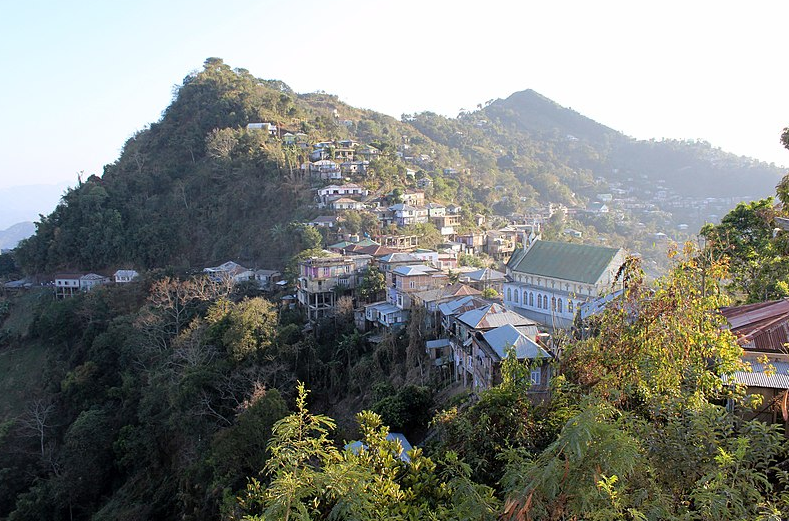
From Hills to Statehood:
Echoes of Ancestral Roots: Mizo history stretches back centuries. Believed to have migrated from the Chin Hills in present-day Myanmar, the Mizo people developed a strong sense of community and a unique cultural identity based on shared ancestry and traditions.
Under Colonial Rule: The arrival of the British Raj in the 19th century disrupted the Mizo way of life. The region became part of the Assam province, leading to tensions and occasional rebellions against colonial rule.
Seeds of Independence: The 20th century witnessed a growing movement for autonomy. Leaders like Pu Goura and Pu Zoramthanga championed the cause for a separate Mizo state, highlighting the cultural and linguistic differences from the dominant Assamese population.
A Turbulent Path: The Mizo National Front (MNF) emerged in the 1960s, demanding greater autonomy. This period saw periods of unrest and violence. However, negotiations with the Indian government ultimately led to a peaceful resolution.
A State is Born: In 1986, the Mizoram Peace Accord was signed, paving the way for the formation of Mizoram. The Indian Parliament passed the 53rd amendment, granting statehood to Mizoram in 1987. This marked a significant milestone for the Mizo people, granting them the right to self-determination and govern their own affairs.
Language: A Unifying Force
Mizo: The Thread that Binds: Mizo, a Sino-Tibetan language with several dialects, is the official language of Mizoram. It serves as a unifying force across diverse ethnicities within the Mizo community and is spoken by a vast majority of the population.
Preserving the Heritage: The Mizo language holds immense cultural significance. Efforts are underway to standardize the written script and promote its use in education and administration.
A Tapestry of Ethnicities
The Predominant Mizos: The Mizo people, comprising various sub-tribes like the Lushai, Kuki, and Hmar, form the majority population. Each sub-tribe has its distinct customs and traditions, but they share a common ancestry and cultural identity.
Celebrating Diversity: Mिजोरम (Mizoram) also houses smaller communities like the Hmars, Vaiphei, and Lai, who enrich the state’s social fabric with their unique languages and traditions. The state actively promotes cultural exchange and celebrates the diversity of its ethnicities.
Aizawl: The Hilltop Capital
Aizawl: The Heart of Mizoram: Aizawl, nestled amidst scenic hills, is the capital city of Mizoram. Established in the late 19th century, it has emerged as a major administrative, educational, and commercial center.
A City on the Rise: Aizawl is undergoing rapid development, with initiatives aimed at improving infrastructure, education, and healthcare facilities. The city also takes pride in preserving its cultural heritage through museums and vibrant festivals like Chapchar Kut, a celebration of Mizo tribes.
18. Nagaland: A Land Stitched Together by Tribes – History, Language, Ethnicity, and Capital City
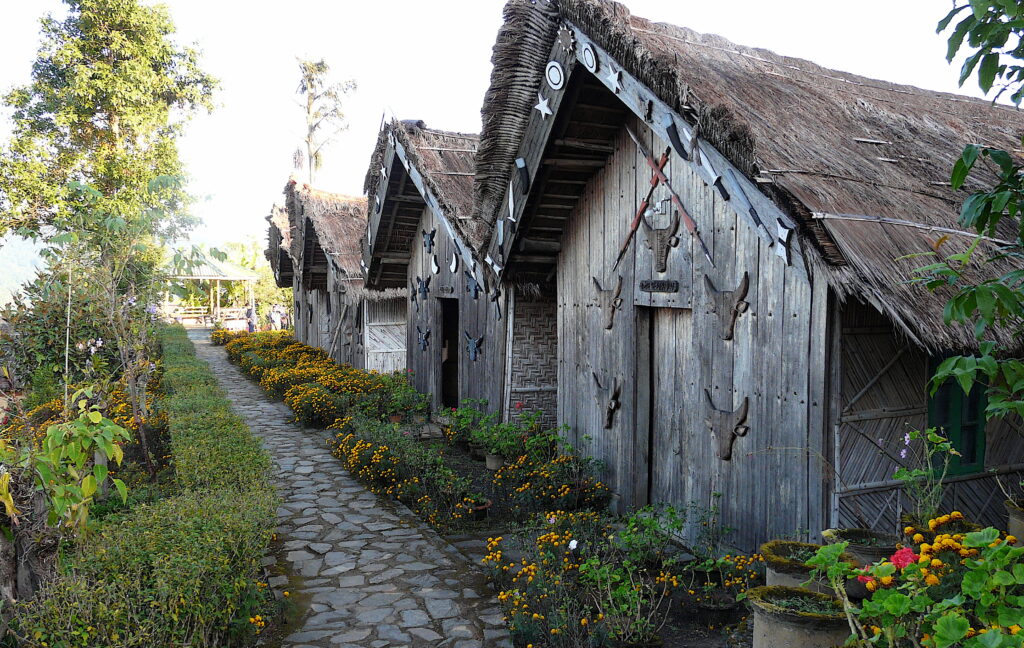
From Fragmented Tribes to a Unified State:
Echoes of Ancient Warriors: Nagaland’s history predates written records. Archaeological evidence suggests the presence of headhunting tribes as early as the first millennium BC. The region remained fragmented, with numerous Naga tribes inhabiting the hills, each with distinct customs, languages, and social structures.
Early Encounters: Medieval chronicles of the Ahom kingdom in Assam mention interactions with the Naga tribes. However, significant external influence arrived with the British Raj in the 19th century. The British sought to control the strategically located region, leading to the annexation of Naga territory and the introduction of Christianity.
Seeds of Nationalism: The 20th century witnessed the rise of Naga nationalism. The Naga Hills District Tribal Council, formed in 1929, advocated for autonomy and the preservation of Naga culture. However, tensions arose due to the inclusion of the Naga Hills under the Assam province, where the dominant Assamese culture differed significantly.
A Turbulent Path: The demand for a separate Naga state intensified in the post-independence era. The Naga National Council (NNC) emerged, demanding complete independence from India. This period saw periods of insurgency and violence. Negotiations with the Indian government ultimately led to a more peaceful resolution.
Birth of a State: In 1963, recognizing the distinct Naga identity and the desire for self-governance, the 16th Amendment to the Indian Constitution established Nagaland as a state. This move aimed to address the grievances of the Naga people and pave the way for peaceful development.
A Symphony of Languages:
No Single Dominant Tongue: Unlike many Indian states, Nagaland has no single dominant language. Each Naga tribe has its own distinct language, reflecting their unique heritage. Over 16 Naga languages exist, with significant variations in vocabulary and grammar.
English: The Bridge: English serves as the official language of Nagaland, facilitating communication across diverse tribes and with the wider Indian administration. Nagamese, a lingua franca based on Assamese with influences from Naga languages, is also spoken by some sections of the population.
A Mosaic of Ethnicities:
The Predominant Nagas: The Naga people, comprising numerous tribes like the Angami, Ao, Lotha, and Sema, form the vast majority of Nagaland’s population. Each tribe has its own rich oral history, traditional festivals, and social structures. Headhunting, a practice of the past, has been replaced by peaceful conflict resolution methods.
Embracing Diversity: While the Naga tribes form the dominant population, Nagaland also houses smaller communities like the Konyaks and Kacharis, enriching the state’s social fabric. The state government actively promotes inter-tribal understanding and celebrates the diversity of its ethnicities.
Kohima: The City of Flowers:
Kohima: A Symbol of Unity: Kohima, nestled amidst picturesque hills, is the capital city of Nagaland. Initially a small village inhabited by the Angami tribe, it was chosen as the capital due to its central location and potential to symbolize unity amongst the diverse Naga communities.
A City on the Rise: Kohima is undergoing rapid development, with a focus on improving infrastructure, education, and healthcare facilities. The city also takes pride in preserving its rich history through war memorials like the Kohima War Cemetery, a poignant reminder of the region’s turbulent past.
19. Odisha: Echoes of Empires, A Land United by Odia – History, Language, Ethnicity, and Capital City
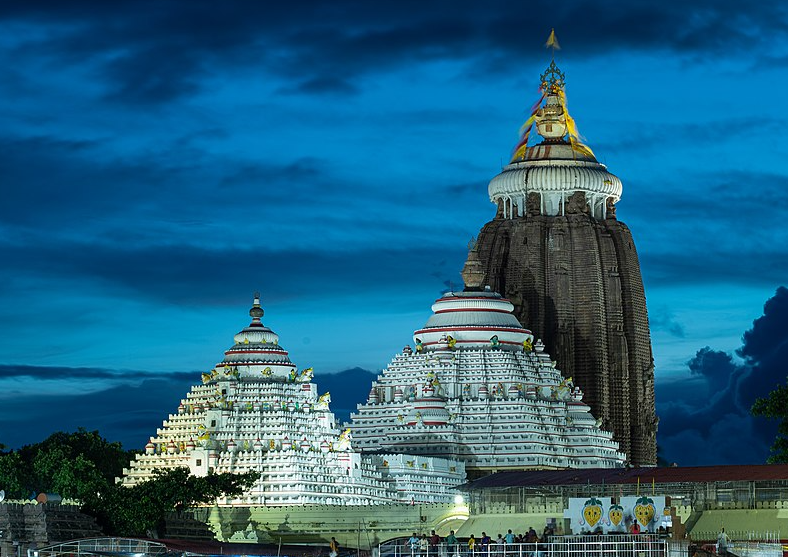
Echoes of Ancient Kingdoms:
Kalinga’s Legacy: Odisha’s history stretches back to the mighty Kalinga Empire, which flourished from the 3rd century BC to the 1st century BC. The Kalinga War with Emperor Ashoka the Great, a pivotal moment in Indian history, is believed to have taken place in Odisha. This period laid the foundation for a distinct Odia cultural identity.
Medieval Maritime Hub: During the medieval period, Odisha witnessed the rise of powerful kingdoms like the Somavamshi dynasty and the Gajapati Empire. These empires fostered trade and cultural exchange, establishing Odisha as a prominent maritime hub in the Indian Ocean trade network.
Colonial Divisions and the Unification Movement:
Divided Loyalties: The arrival of the British Raj in the 18th century led to the division of Odia-speaking regions between Bengal and the Central Provinces. This separation posed a challenge to the Odia identity.
Utkal Sammilani: A Call for Unity: The early 20th century saw the rise of the Utkal Sammilani, a socio-political organization advocating for the unification of Odia-speaking regions. This movement gained momentum, highlighting the cultural and linguistic unity of the Odia people.
Birth of a State:
The States Reorganisation Act: In 1936, the Government of India Act incorporated the States Reorganisation Act. This act recognized the distinct Odia language and cultural heritage, leading to the formation of the Orissa Province, consisting of the Odia-speaking districts of Bihar and Orissa Province. The 1st of April is celebrated as Utkala Dibasa (Odisha Day) to commemorate this landmark event.
Post-Independence Transformation: Following India’s independence in 1947, 27 princely states signed agreements to join Orissa Province. In 2011, the state’s name was officially changed to Odisha.
Unifying Force: The Odia Language
Odia: The Thread that Binds: Odia, an Indo-Aryan language with a rich literary heritage, is the official language of Odisha. It serves as a unifying force across diverse ethnicities and is spoken by a vast majority of the population.
A Literary Legacy: Odia boasts a rich literary tradition dating back centuries. Poets like Upendra Bhanja, known for his devotional poems, and Fakir Mohan Senapati, considered the father of modern Odia literature, have significantly contributed to the language’s development.
A Tapestry of Ethnicities:
Predominantly Odia: The Odia people form the majority population of Odisha. They comprise various sub-groups like the Khandayats (warriors), Karanas (scribes), and Bhandaris (treasurers), each with distinct customs and traditions.
Celebrating Diversity: Odisha also houses a mosaic of tribal communities like the Kandhas, known for their vibrant Dussehra celebrations, and the Santals, skilled in archery and agriculture. The state government actively promotes inter-community understanding and celebrates the diversity of its ethnicities.
Bhubaneswar: A City Steeped in History and Progress
Bhubaneswar, meaning “Lord of the Earth,” is the current capital city of Odisha, India. Unlike Cuttack, which served as the capital for centuries during the British era, Bhubaneswar was specifically chosen and developed as a modern capital city after India’s independence.
A Planned City with Ancient Roots: Bhubaneswar boasts a unique character. While the city incorporates modern town planning principles with wide roads and well-defined sectors, it also houses an old city area rich in historical significance. This old city is dotted with magnificent temples dating back centuries, showcasing the artistic heritage of Odisha. The juxtaposition of modern development and ancient temples creates a captivating urban landscape.
Administrative and Cultural Hub: Bhubaneswar is the seat of the state government of Odisha, housing the Vidhan Sabha (Legislative Assembly) and other administrative offices. The city has also emerged as a major center for information technology, education, and tourism.
20. Punjab: A Land Divided by Language, United by Heritage – History, Language, Ethnicity, and Capital City
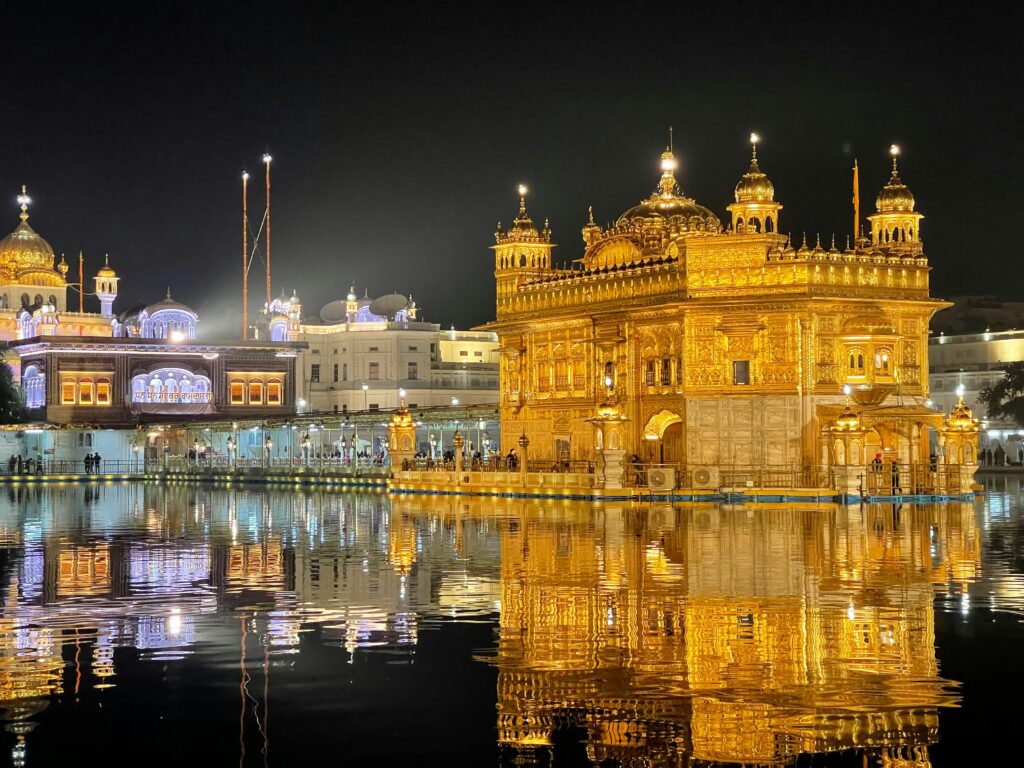
From Empires to a United Punjab:
Echoes of Ancient Rulers: Punjab’s history stretches back centuries. It formed part of the mighty Mauryan Empire, Gupta Empire, and later powerful kingdoms like the Delhi Sultanate and Mughal Empire. This rich past left behind a legacy of architectural marvels like the Golden Temple in Amritsar.
Colonial Legacy and Sikh Influence: The arrival of the British Raj in the 18th century marked a significant shift. The region became part of British India, and the rise of the Sikh Empire under Maharaja Ranjit Singh briefly unified much of the Punjab region. However, following the decline of the Sikh Empire, the British redrew administrative boundaries.
The Punjabi Suba Movement and State Reorganization:
Language as a Dividing Line: After independence in 1947, the Indian Punjab included regions with Hindi and Punjabi speakers. This diversity fueled the Punjabi Suba movement, advocating for a separate state based solely on the Punjabi language.
A State Divided: In 1966, the States Reorganisation Act carved out separate states based on linguistic identities. Hindi-speaking areas were separated to form the new state of Haryana. The remaining Punjabi-speaking regions became the present-day state of Punjab. This division remains a sensitive topic for some sections of the population.
Punjabi: The Unifying Thread
Punjabi: The Soul of the State: Punjabi, an Indo-Aryan language with a rich literary heritage, is the official language of Punjab. It serves as a unifying force across diverse ethnicities and is spoken by a vast majority of the population.
A Tapestry of Ethnicities:
Predominantly Punjabi: The Punjabi people form the majority population. They comprise various sub-groups like the Jatts (agriculturalists), Kambojs (traders), and Aroras (business community), each with distinct customs and traditions.
Beyond Punjabis: While Punjabi is dominant, the state also houses smaller communities like Sikhs, who play a significant role in Punjab’s cultural and religious identity. Additionally, communities like the Bishnois, known for their environmental conservation practices, enrich the social fabric.
Chandigarh: A Shared Capital City
A Union Territory: Unlike most Indian states with a single capital city within their borders, Punjab shares Chandigarh, a meticulously planned city, with neighboring Haryana.
A Symbol of Unity: Chandigarh’s creation as a Union Territory aimed to provide a neutral capital for both states following the division of Punjab. It boasts modern architecture and serves as a major administrative, commercial, and educational center for both Punjab and Haryana.
21. Rajasthan: A Land of Rajput Valor – History, Language, Ethnicity, and Capital City
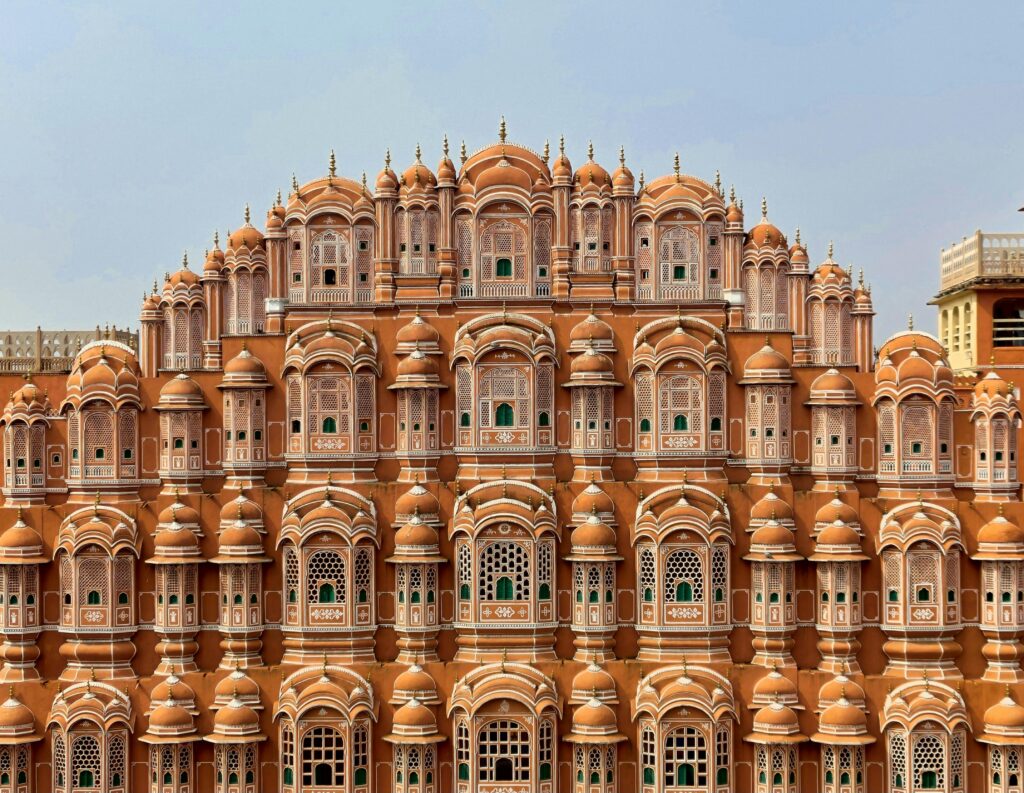
From Princely States to a Unified Rajasthan:
Echoes of Rajput Glory: Rajasthan’s history stretches back centuries. Powerful Rajput dynasties like the Pratiharas, Chauhans, and Sisodiyas ruled various parts of the region, leaving behind a legacy of magnificent forts like Mehrangarh in Jodhpur and Chittorgarh Fort. These Rajput kingdoms were known for their chivalry and fierce resistance against invaders.
Colonial Era and Fragmentation: The arrival of the British Raj in the 18th and 19th centuries weakened the Rajput kingdoms. The region was divided into numerous princely states under British suzerainty.
The Road to Unification:
The Merger Movement: Following India’s independence in 1947, these princely states faced the choice of joining India or Pakistan. A series of mergers, spearheaded by leaders like Sardar Vallabhbhai Patel, saw most Rajput states integrate with the newly formed Indian Union.
Birth of a State: In 1949, the States Reorganisation Act formally established the United State of Rajasthan. This act merged various princely states, Rajputana chieftainships, and the British district of Ajmer-Merwara, creating a unified Rajasthan.
A Symphony of Languages:
Marwari: The Dominant Force: Rajasthan boasts a rich linguistic landscape. Marwari, a dialect of Rajasthani, is the most widely spoken language, particularly in western Rajasthan. It reflects the region’s unique cultural heritage and historical ties.
A Tapestry of Tongues: Rajasthan showcases a vibrant tapestry of languages. Hindi, the national language, is widely understood and used in official communication. Other regional languages like Mewari, Malvi, and Dhundhari add to the state’s linguistic diversity.
A Mosaic of Ethnicities:
The Predominant Rajputs: The Rajputs, descendants of warriors and rulers, form a significant portion of Rajasthan’s population. They are known for their rich martial traditions, elaborate costumes, and adherence to a strong sense of honor. Various Rajput clans, each with distinct customs and lineages, contribute to the state’s social fabric.
Beyond the Rajputs: Rajasthan is a land of diverse communities. The Jats, known for their agricultural skills, and the Gujjars, a semi-nomadic pastoral community, enrich the social landscape. Additionally, tribal communities like the Bhils and Meenas add to the state’s cultural tapestry.
Jaipur: The Pink City Beckons
Jaipur: A Legacy of Planning: Jaipur, the “Pink City,” is the capital and largest city of Rajasthan. Founded in the early 18th century by Maharaja Sawai Jai Singh II, the city was meticulously planned with wide avenues and painted a distinctive pink color to symbolize hospitality.
A Hub of Culture and Commerce: Jaipur is a major tourist destination, renowned for its historical forts, palaces like Hawa Mahal (Palace of Winds), and vibrant bazaars. It also serves as a center for education, commerce, and handicrafts.
22. Sikkim: From Himalayan Kingdom to Indian State – A Tapestry of Culture, Language, and Ethnicity
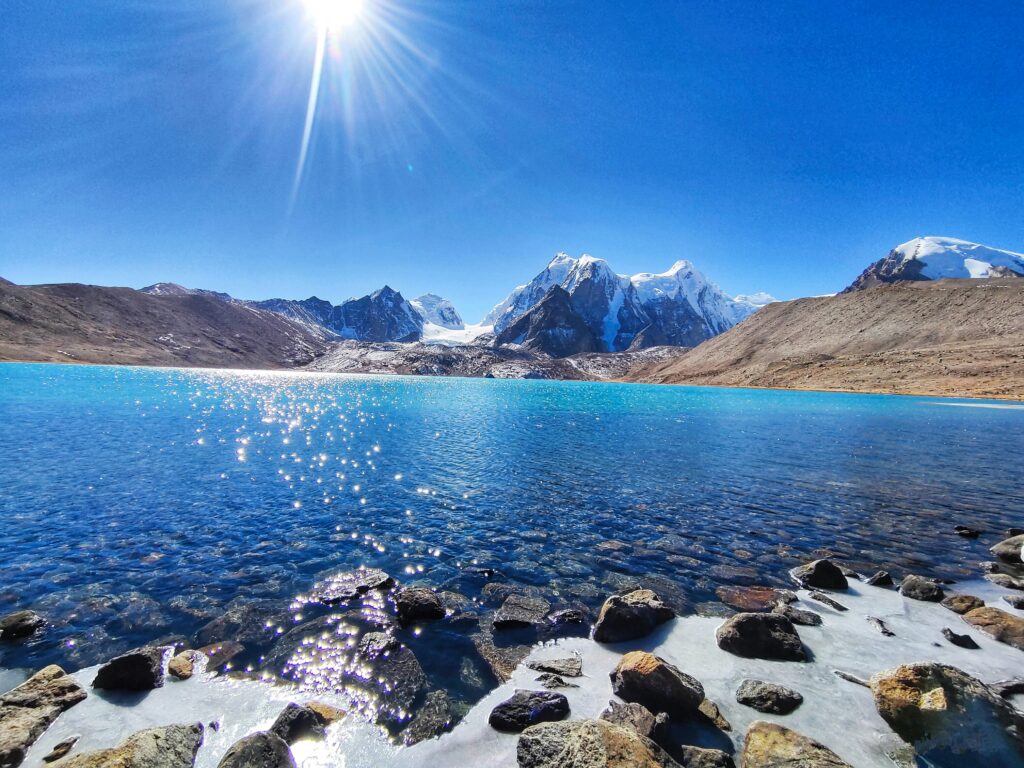
From Chogyals to Democracy:
Echoes of a Monarchy: Sikkim’s history stretches back centuries. The Namgyal dynasty, established in the 17th century, ruled Sikkim as a Buddhist kingdom. The monarchs, known as Chogyals, fostered a unique blend of Tibetan and Lepcha traditions, shaping the state’s cultural identity.
British Protectorate: The 19th century saw the arrival of the British Raj. In 1890, Sikkim became a British protectorate, retaining some internal autonomy but under British control in foreign affairs and defense.
A Fight for Self-Determination:
Seeds of Independence: Following India’s independence in 1947, Sikkim remained a protectorate. However, a growing desire for self-governance emerged amongst the Sikkimese people. The Chogyal monarchy faced increasing pressure to share power and integrate more closely with India.
Turbulent Times: The 1970s witnessed a period of political unrest. Tensions between pro- and anti-monarchy factions escalated. In 1973, a political uprising led to the arrest of the Chogyal and the establishment of a caretaker government.
A State is Born:
A Referendum for Change: In 1975, a referendum held under Indian supervision saw a majority vote in favor of abolishing the monarchy and making Sikkim a full-fledged state of India. This marked a significant turning point in Sikkim’s history, granting it greater autonomy and ensuring its participation in the Indian democracy.
A Symphony of Languages:
Sikkimese: A Cultural Treasure: Sikkimese, a Tibeto-Burman language, is one of the official languages of Sikkim. It holds immense cultural significance, reflecting the state’s unique heritage. Efforts are underway to preserve and promote its use in education and administration.
A Tapestry of Tongues: Sikkim’s linguistic landscape is enriched by Nepali, another official language, spoken by a significant portion of the population. Additionally, languages like Bhutia, Lepcha, and English contribute to the state’s vibrant linguistic diversity.
A Mosaic of Ethnicities:
The Predominant Bhutia and Lepcha: The Bhutia people, with their Tibetan ancestry, and the Lepchas, the indigenous inhabitants of Sikkim, form the two major ethnic groups. Both communities have distinct customs, traditions, and spiritual beliefs that contribute to Sikkim’s cultural richness.
Celebrating Diversity: Sikkim also houses Nepali and other smaller communities like the Limbus and Newars. The state actively promotes inter-ethnic understanding and celebrates the diversity of its inhabitants through vibrant festivals like Losar (Bhutia New Year) and Bumchu (Lepcha New Year).
Gangtok: The Enchanting Capital
A City Steeped in Beauty: Nestled amidst the Himalayas, Gangtok is the capital city of Sikkim. Initially a small village, it rose to prominence under the Chogyal rule and became the state capital in 1894. Gangtok’s scenic beauty, with views of Mount Kanchenjunga, and its blend of Buddhist monasteries and colonial architecture make it a popular tourist destination.
A City on the Rise: Gangtok is undergoing rapid development, with initiatives aimed at improving infrastructure, education, and healthcare facilities. While preserving its historical charm, the city embraces sustainable practices and promotes eco-tourism.
23. Tamil Nadu: A Land Steeped in Tradition – History, Language, Ethnicity, and Capital City
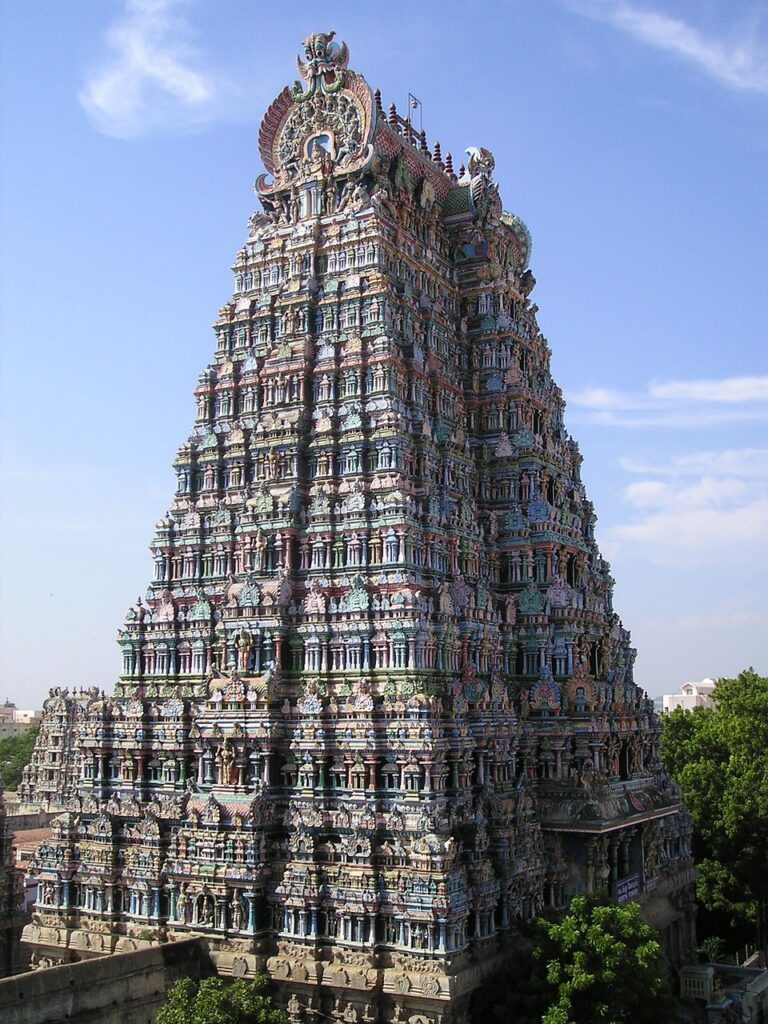
Echoes of Ancient Kingdoms:
Dravidian Legacy: Tamil Nadu’s history stretches back millennia. The region was home to flourishing Dravidian civilizations like the Cholas, Pandyas, and Cheras, who laid the foundation for a distinct Tamil culture. These empires left behind a legacy of magnificent temples, intricate sculptures, and a rich literary heritage in Tamil.
Colonial Rule and the Rise of Nationalism:
The Madras Presidency: The arrival of the British Raj in the 18th century led to the establishment of the Madras Presidency, encompassing a vast region with diverse ethnicities and languages. However, Tamil identity remained strong, fueled by a flourishing Tamil literary movement.
Seeds of Separation: The 20th century witnessed the rise of Tamil nationalism. The Justice Party, later known as the Dravidar Kazhagam (DK), championed the cause of Dravidian identity and social reforms. This movement highlighted the cultural and linguistic differences between Tamils and the dominant north Indian populations.
Birth of a Tamil State:
The States Reorganisation Act: In 1956, recognizing the distinct cultural identity and strong linguistic unity of the Tamil people, the States Reorganisation Act came into effect. This act redrew state boundaries based on language, leading to the formation of Tamil Nadu by merging Tamil-speaking regions from the Madras State with the state of Travancore-Cochin.
Tamil: The Enduring Thread:
Tamil: The Soul of the State: Tamil, one of the world’s oldest living languages, is the official language of Tamil Nadu and spoken by a vast majority of the population. It boasts a rich literary heritage dating back centuries, with renowned works like the Sangam poems and Thiruvalluvar’s Tirukkural. The Tamil language serves as a unifying force across diverse ethnicities within the state.
A Tapestry of Ethnicities:
The Predominant Tamils: Tamils form the vast majority of the population in Tamil Nadu. They comprise various sub-groups like the Vellalars (farmers), Mudaliars (agriculturalists), and Chettiars (merchants), each with distinct customs and traditions.
Celebrating Diversity: While Tamils dominate, Tamil Nadu also houses smaller communities like the Malayalis, inhabiting the western part of the state, and tribal groups like the Irulas. The state government actively promotes inter-community understanding and celebrates the diversity of its ethnicities.
Chennai: The Gateway to the South
From Madras to Chennai: Chennai, nestled on the Coromandel Coast, is the capital city of Tamil Nadu. Originally known as Madras under British rule, the city was renamed Chennai in 1996. It served as a major administrative and commercial center during the colonial era and continues to be a vital economic hub for South India.
A City on the Move: Chennai is undergoing rapid development, with a focus on improving infrastructure, education, and healthcare facilities. The city also takes pride in preserving its historical landmarks like Fort St. George and Marina Beach, a popular tourist destination.
24. Telangana: A Long-Awaited Dream Realized – History, Language, Ethnicity, and Capital City
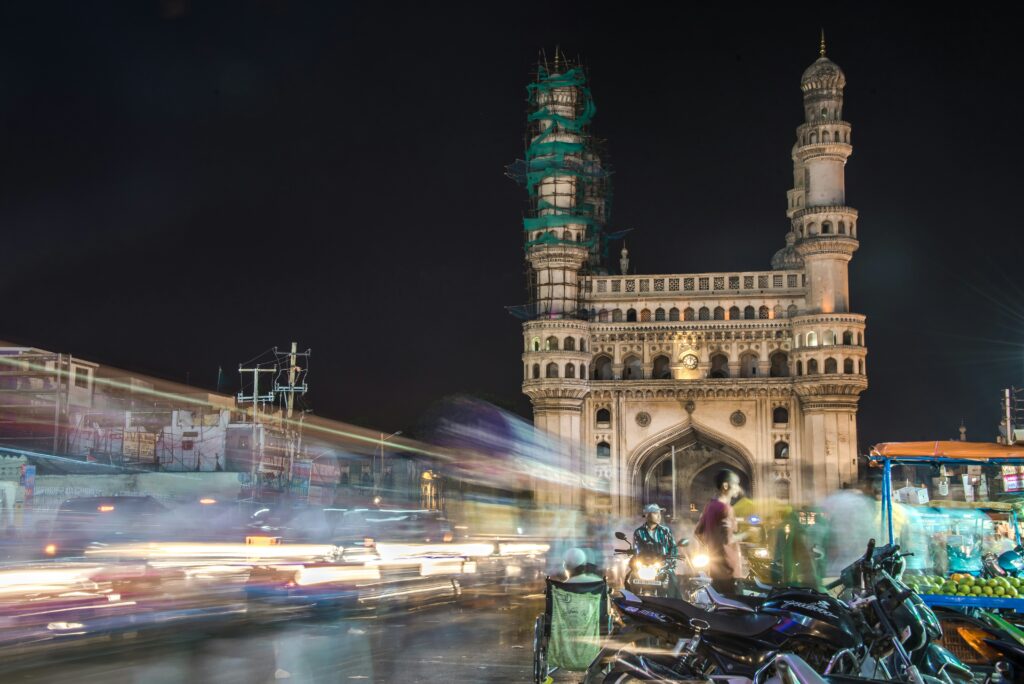
From Hyderabad State to a Separate Telangana:
Hyderabad’s Legacy: The region that is now Telangana was historically part of various empires, including the Satavahanas, Kakatiyas, and Qutb Shahis. In the 18th century, it became part of the Hyderabad State, ruled by the Nizams. Urdu was the official language, despite a significant Telugu-speaking population.
Seeds of Discontent: After India’s independence in 1948, Hyderabad State integrated with India. However, tensions arose due to the dominance of Urdu and concerns about the underdevelopment of the Telangana region compared to the Andhra region within the state.
The Telangana Movement:
A Call for Recognition: The 1960s saw the rise of the Telangana movement, demanding a separate state based on cultural and linguistic identity. Leaders like K. Chandrasekhar Rao and others championed the cause, highlighting the historical, social, and economic disparities between Telangana and Andhra.
A Turbulent Path: The movement witnessed periods of peaceful protests and occasional violence. Negotiations with the Indian government took place over several decades.
Birth of a State:
A Decisive Moment: In 2013, after years of political agitation, the Indian government announced the formation of a separate Telangana state. The decision was met with jubilation in Telangana and paved the way for a more equitable future for the region.
Shared Capital: Hyderabad, a major historical and cultural center, was initially designated as the joint capital of Telangana and the Andhra Pradesh state for a period of ten years. In 2016, Hyderabad became the sole capital of Telangana.
Telugu: The Unifying Thread:
Telugu: A Shared Language: Telugu, a Dravidian language with a rich literary heritage, is the official language of Telangana. It serves as a unifying force across diverse ethnicities within the state and is spoken by a vast majority of the population.
A Tapestry of Ethnicities:
The Predominant Telangas: The Telangas, a Telugu-speaking people with a distinct cultural identity, form the majority population. They comprise various sub-groups like the Velamas (agriculturalists), Rajus (landowners), and Mala (agricultural laborers), each with unique customs and traditions.
Beyond the Telangas: While Telangas dominate, Telangana also houses smaller communities like the Koyas and Gowdas, enriching the state’s social fabric. The state government actively promotes inter-community understanding and celebrates the diversity of its ethnicities.
Hyderabad: The Pearl City
A City of Historical Significance: Hyderabad, nicknamed the “City of Pearls,” is the capital city of Telangana. Founded by Muhammad Quli Qutb Shah in the 16th century, it boasts a rich historical heritage evident in its iconic Charminar monument and the Golconda Fort.
A Thriving Metropolis: Hyderabad has emerged as a major center for information technology, pharmaceuticals, and education. The city is undergoing rapid development, with initiatives aimed at improving infrastructure, attracting global investment, and preserving its historical significance.
25. Tripura: The Land of Tripuris – A Journey Through History, Language, Ethnicity, and Capital City
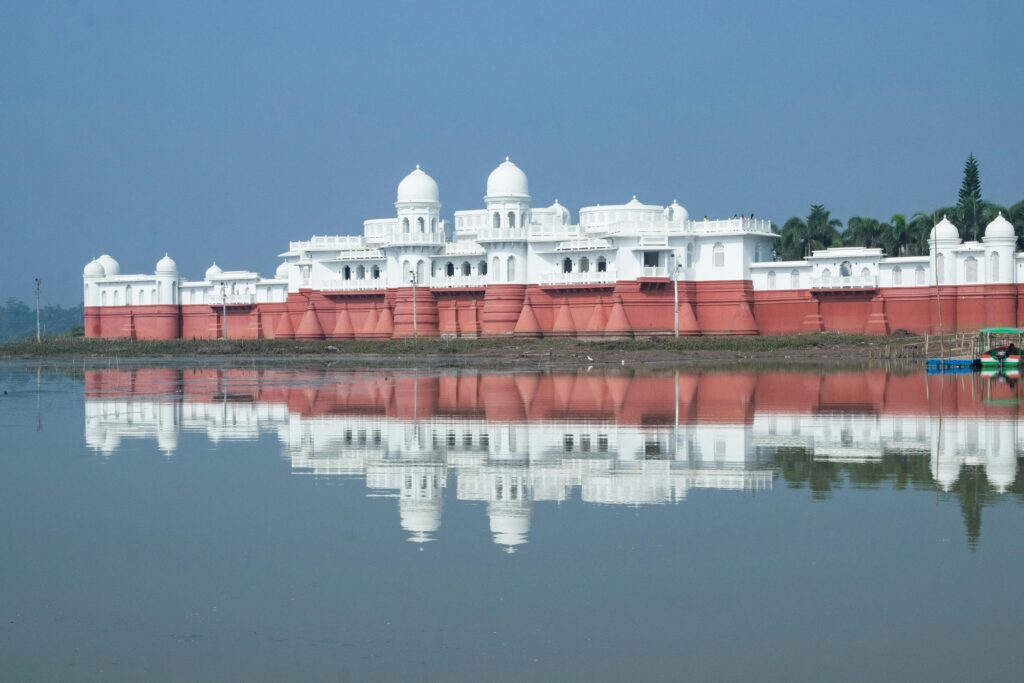
Echoes of a Glorious Past:
Manikya Dynasty’s Legacy: Tripura’s history stretches back centuries. The Manikya dynasty ruled the region for several centuries, establishing a flourishing kingdom known as the Tripuri Kingdom (also called Hill Tippera). These rulers left behind a legacy of magnificent temples like Tripura Sundari Temple and Ujjayanta Palace, reflecting the kingdom’s cultural and architectural heritage.
Under Colonial Rule and A Divided Kingdom:
British Influence: The arrival of the British Raj in the 19th century disrupted Tripura’s political landscape. The Manikya kings retained control over the hilly region (present-day Tripura) but ceded some lowland areas to the British, forming the Tippera district within British India.
The Road to Statehood:
Seeds of Independence: The 20th century witnessed a growing desire for self-determination. Leaders like Tripura Chandra Tripura and Sachindra Debbarman championed the cause for a united Tripura, free from British rule and integrated with independent India.
Merging with India: Following India’s independence in 1947, Tripura’s Maharaja acceded to the Indian Union. In 1949, it became a ‘Part C State’ (Union Territory).
A State is Born:
The Tripura Ganamukti Parishad: The Tripura Ganamukti Parishad, a political party advocating for full statehood, gained momentum in the 1960s. Negotiations with the Indian government culminated in the passage of the North-Eastern Areas (Reorganisation) Act, 1971.
A Historic Moment: On January 21st, 1972, Tripura formally achieved statehood, granting it greater autonomy and representation within the Indian Union. This marked a significant milestone for the Tripuri people.
Kokborok: The Unifying Thread:
Kokborok: A Language of Identity: Kokborok, a Tibeto-Burman language with a rich oral tradition, is the official language of Tripura. It serves as a unifying force for the diverse Tripuri communities and is spoken by a significant portion of the population.
Preserving the Heritage: Efforts are underway to promote the use of Kokborok in education and administration, ensuring its survival for future generations.
A Tapestry of Ethnicities:
The Predominant Tripuris: The Tripuri people, comprising various sub-groups like the Noatia, Reang, and Jamatia, form the majority population. Each sub-group has distinct customs, languages, and traditions, enriching the cultural fabric of Tripura.
Celebrating Diversity: Tripura also houses smaller communities like the Bengalis and tribals like the Chakmas and Lushais. The state actively promotes inter-community understanding and celebrates the diversity of its ethnicities through vibrant festivals like Ker Puja and Garia Puja.
Agartala: The City of Lakes
From a Princely Town to a Capital City: Agartala, nestled amidst scenic hills and dotted with lakes, is the capital city of Tripura. Initially a small princely town, it emerged as the administrative center under the Manikya dynasty and later became the state capital after Tripura’s formation.
A City on the Rise: Agartala is undergoing rapid development, with initiatives focusing on improving infrastructure, education, and healthcare facilities. The city also takes pride in preserving its historical landmarks like Ujjayanta Palace Museum and its vibrant cultural scene.
26. Uttarakhand: From Himalayan Kingdoms to Vibrant State – Unveiling History, Language, Ethnicity, and Capital City
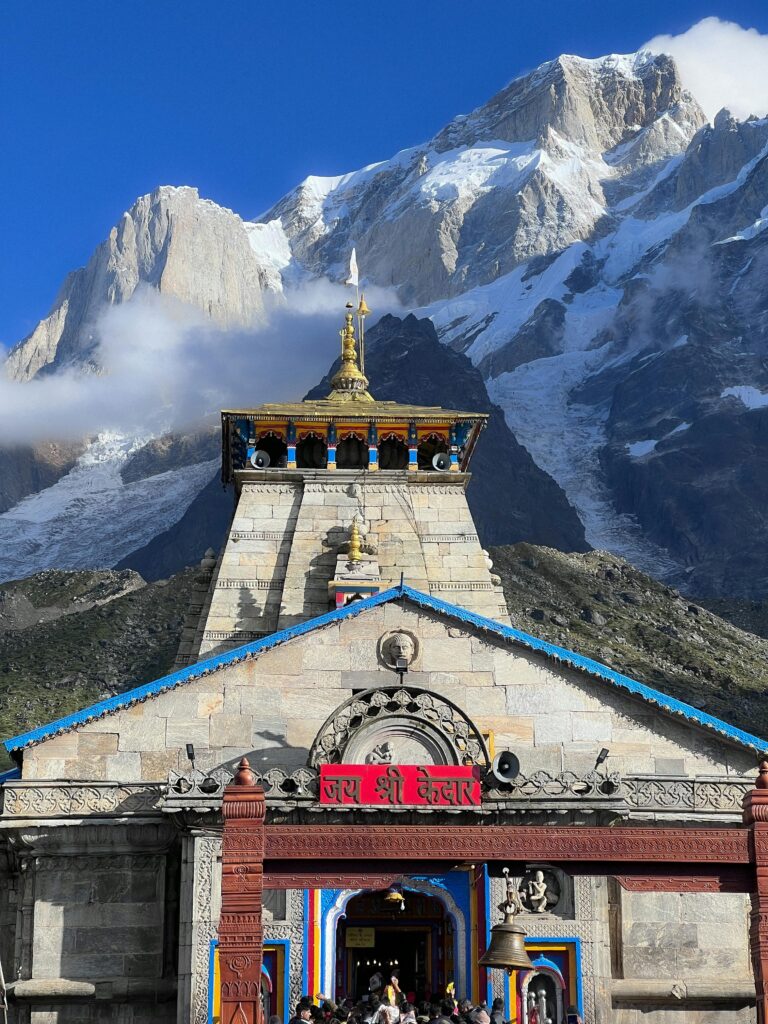
Echoes of Ancient Rulers:
Legacy of Kingdoms: Uttarakhand’s history stretches back centuries. The region witnessed the rise of powerful kingdoms like the Garhwal Kingdom in the west and the Kumaon Kingdom in the east. These kingdoms flourished between the 8th and 18th centuries, leaving behind a legacy of magnificent forts like Almora Fort and temples like Kedarnath and Badrinath, significant pilgrimage sites for Hindus.
Colonial Rule and Shifting Boundaries:
Under British Control: The arrival of the British Raj in the 18th century disrupted the region’s political landscape. The British incorporated the Garhwal and Kumaon kingdoms into the United Provinces of Agra and Oudh. This period saw the introduction of Hindi and English into administration, impacting the local languages.
The Uttarakhand Movement:
Seeds of Unity: The 20th century witnessed the rise of the Uttarakhand movement. This movement, spearheaded by leaders like Hemwati Nandan Bahuguna, advocated for the creation of a separate state encompassing the Garhwal and Kumaon regions. The movement highlighted the region’s distinct cultural identity, rich Himalayan heritage, and the need for focused development.
Birth of a State:
A Dream Realized: Years of political agitation and negotiations with the Indian government culminated in the passage of the Uttar Pradesh Reorganisation Act in 2000. This act carved out a new state – Uttarakhand – from the western Himalayan region of Uttar Pradesh. The formation of Uttarakhand marked a significant milestone for the region’s people.
A Symphony of Languages:
Garhwali and Kumaoni: Threads of Identity: Uttarakhand boasts a rich linguistic landscape. Garhwali and Kumaoni, Indo-Aryan languages with unique dialects, are spoken by a significant portion of the population in their respective regions. These languages reflect the distinct cultural heritage of Garhwal and Kumaon and are celebrated in local literature and music.
Hindi: The Unifying Force: Hindi, the national language of India, serves as a common language for communication across diverse ethnicities within the state.
A Tapestry of Ethnicities:
The Predominant Garhwali and Kumaoni People: The Garhwalis and Kumaonis, with their distinct customs and traditions, form the majority population in their respective regions. Other communities like the Jaunsaris, known for their transhumance practices, and the Bhotias, residing in higher Himalayan regions, enrich the state’s social fabric.
Celebrating Diversity: Uttarakhand also houses smaller communities like the Sikhs and Muslims, adding to the state’s cultural diversity. The state government actively promotes inter-community understanding and celebrates the vibrant festivals of various ethnicities like Diwali and Nanda Devi Raj Jaat Yatra.
Dehradun: The Winter and Summer Capital
A City of History and Education: Dehradun, nestled in the foothills of the Himalayas, serves as the capital of Uttarakhand. It boasts a rich history, evident in its colonial architecture and educational institutions like the Indian Military Academy. Dehradun enjoys a pleasant climate, making it the winter capital.
Sharing the Capital Duty: Due to its strategic location in the southern part of the state, Dehradun shares capital duties with Gairsain, a historic town situated in the Garhwal region. Gairsain serves as the summer capital, offering a scenic backdrop for government functioning during the warmer months.
27. Uttar Pradesh: A Land Steeped in History – Formation, Languages, Ethnicities, and Capital City
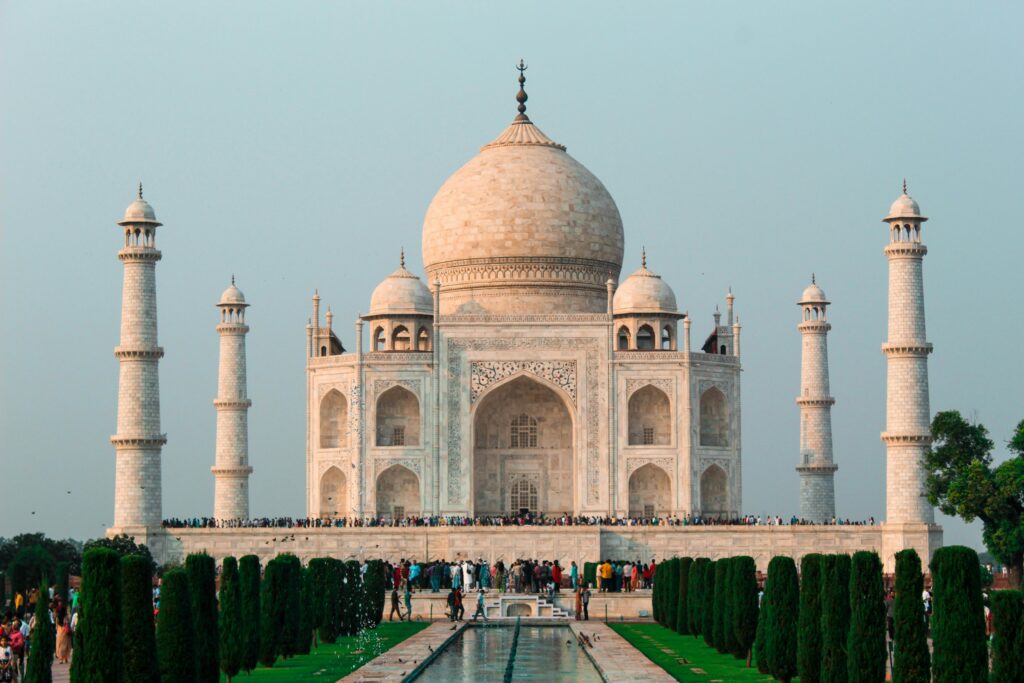
From Mughal Rule to a United Province:
Echoes of Empires: Uttar Pradesh’s history stretches back centuries. It formed part of mighty empires like the Mauryas, Guptas, and later the powerful Delhi Sultanate and Mughal Empire. The architectural marvels like Taj Mahal in Agra and Varanasi’s ancient temples stand as testaments to this rich past.
Colonial Legacy and Administrative Shifts: The arrival of the British Raj in the 18th century marked a significant shift. The region became part of British India, going through various administrative changes. In 1902, the North-Western Provinces and Oudh were merged to form the United Provinces of Agra and Oudh, a precursor to Uttar Pradesh.
The Road to Statehood:
Post-Independence Rechristening: Following India’s independence in 1947, the United Provinces of Agra and Oudh was renamed Uttar Pradesh, meaning “Northern Province” in Hindi. This reflected the desire for a more geographically descriptive name.
A State Divided: In 2000, a new state, Uttarakhand, was carved out from Uttar Pradesh’s northwestern Himalayan region. This move aimed to address the distinct cultural identity and developmental needs of the region.
A Symphony of Languages:
Hindi: The Dominant Force: Hindi, the national language of India, is widely spoken and understood throughout Uttar Pradesh. It serves as the primary language for administration and education.
A Tapestry of Tongues: Uttar Pradesh showcases a vibrant tapestry of languages. Awadhi, a Hindi dialect spoken in the Awadh region, carries a rich literary heritage. Bhojpuri, another prominent language, is spoken in the eastern part of the state. Urdu, with its historical significance, also finds pockets of speakers, particularly in Lucknow.
A Mosaic of Ethnicities:
Predominantly Indo-Gangetic People: Uttar Pradesh is home to a diverse range of ethnicities, with the Indo-Gangetic people forming the majority. This group encompasses communities like Jats (agriculturalists), Yadavs (farmers), and Brahmins (traditionally associated with priestly roles).
Beyond the Majority: The state also houses smaller communities with distinct cultural identities. The Tharus, inhabiting the Terai region, and the Jaunsaris, known for their transhumant lifestyle, enrich the social fabric.
Lucknow: The City of Nawabs
A Legacy of Cultural Refinement: Lucknow, nicknamed the “City of Nawabs,” is the capital city of Uttar Pradesh. It flourished under the Nawabs of Awadh in the 18th and 19th centuries, becoming a center of art, literature, and refined etiquette. This legacy is evident in its architectural marvels like Bara Imambara and its renowned cuisine.
A Hub of Education and Administration: Lucknow is a major center for education, housing prestigious universities like Banaras Hindu University (BHU) in Varanasi. The city also serves as a vital administrative center for the state government.
28. West Bengal: Where History Flows with the Ganges – Formation, Language, Ethnicity, and Capital City
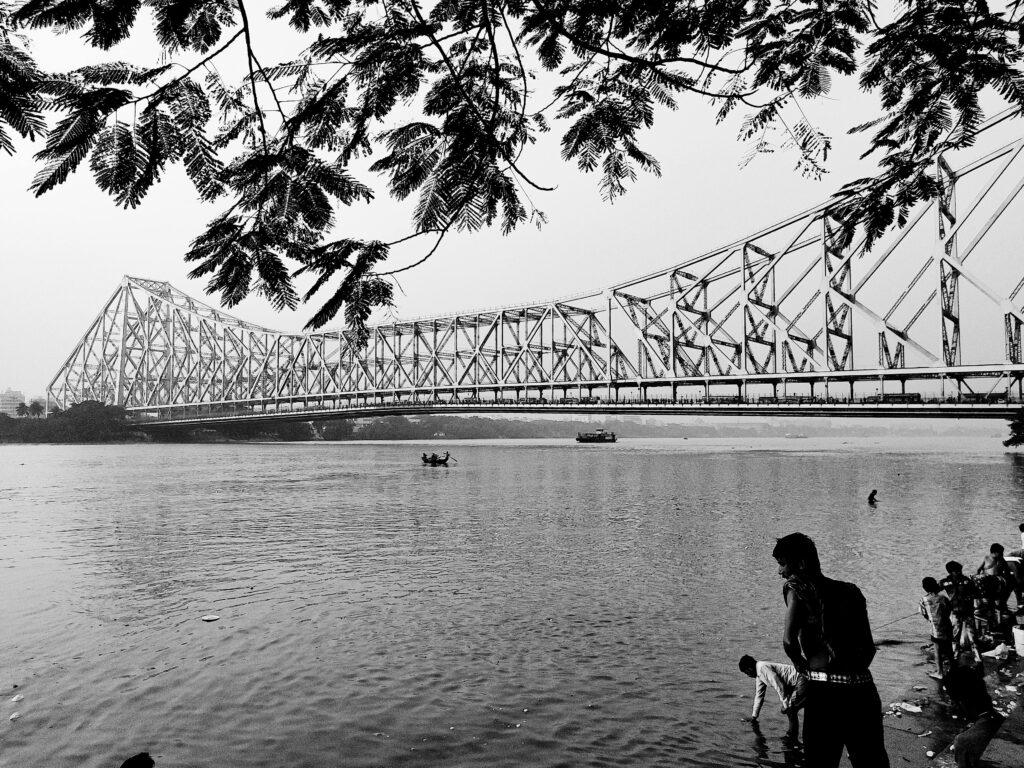
Echoes of a Glorious Past:
Land of Empires and Kingdoms: West Bengal’s history stretches back millennia. It formed part of empires like the Mauryas, Guptas, and later the Pala Empire, known for its patronage of Buddhism. The region also witnessed the rise of Hindu kingdoms like the Senas, leaving behind a legacy of magnificent temples like Dakshineswar Kali Temple and Belur Math.
The Bengal Presidency and Colonial Rule:
Under British Control: The arrival of the British East India Company in the 18th century marked a turning point. The company established the Bengal Presidency, which encompassed a vast region stretching from present-day Bangladesh to parts of Myanmar. Calcutta (now Kolkata) became the capital, transforming into a major center of trade and administration.
The Partition of Bengal and the Birth of a State:
Seeds of Discontent: The early 20th century saw growing tensions between Hindus and Muslims in Bengal. The British attempt to appease both communities by partitioning Bengal in 1905 sparked widespread protests and the rise of the Indian independence movement.
A Long-Awaited Homecoming: Following India’s independence in 1947, the eastern part of Bengal, with a predominant Muslim population, became East Pakistan (now Bangladesh). The western part, with a Bengali Hindu majority, was named West Bengal. This partition fulfilled the longstanding desire for a Bengali-speaking homeland within India.
Bengali: The Unifying Thread:
The Soul of the State: Bengali, an Indo-European language with a rich literary heritage, is the official language of West Bengal. It serves as a unifying force for the diverse communities within the state and is spoken by a vast majority of the population. Bengali literature, poetry, and cinema have gained international acclaim, showcasing the cultural richness of the language.
A Tapestry of Ethnicities:
The Predominant Bengalis: Bengalis, comprising various sub-groups like the Baidya (physicians) and Kayastha (landowners), form the majority population. Each sub-group has distinct customs and traditions, but they share a common Bengali identity.
A Celebration of Diversity: West Bengal also houses smaller communities like the Adivasis (indigenous tribes) and Biharis. The state actively promotes inter-community understanding and celebrates the diversity of its ethnicities through vibrant festivals like Durga Puja and Pohela Boishakh (Bengali New Year).
Kolkata: The City of Joy
From Colonial Capital to Vibrant Metropolis: Kolkata, formerly Calcutta, is the capital city of West Bengal. Established by the British East India Company, it served as the capital of British India until 1911. Today, Kolkata is a bustling metropolis known for its colonial architecture, intellectual fervor, and passionate love for football.
A Hub of Culture and Commerce: Kolkata remains a major center for education, with renowned institutions like Indian Institute of Technology Kharagpur. The city is also a vital commercial hub for eastern India, boasting a thriving film industry and a rich literary scene.
Wish to enhance your knowledge about one of the greatest freedom fighters of India- Netaji Subhash Chandra Bose. CLICK HERE
Conclusion:
In conclusion, our expedition has illuminated the rich tapestry of India’s states, offering invaluable insights into the diverse cultural, geographical, and historical facets of this vibrant nation. Through our exploration, we have not only deepened our understanding of India’s states but also fostered a greater appreciation for the unity amidst diversity that defines the nation. As we bid farewell to this enlightening journey, let us carry forward the knowledge and appreciation gained, continuing to learn about the states of India and celebrate their unique contributions to the mosaic of Indian identity.

